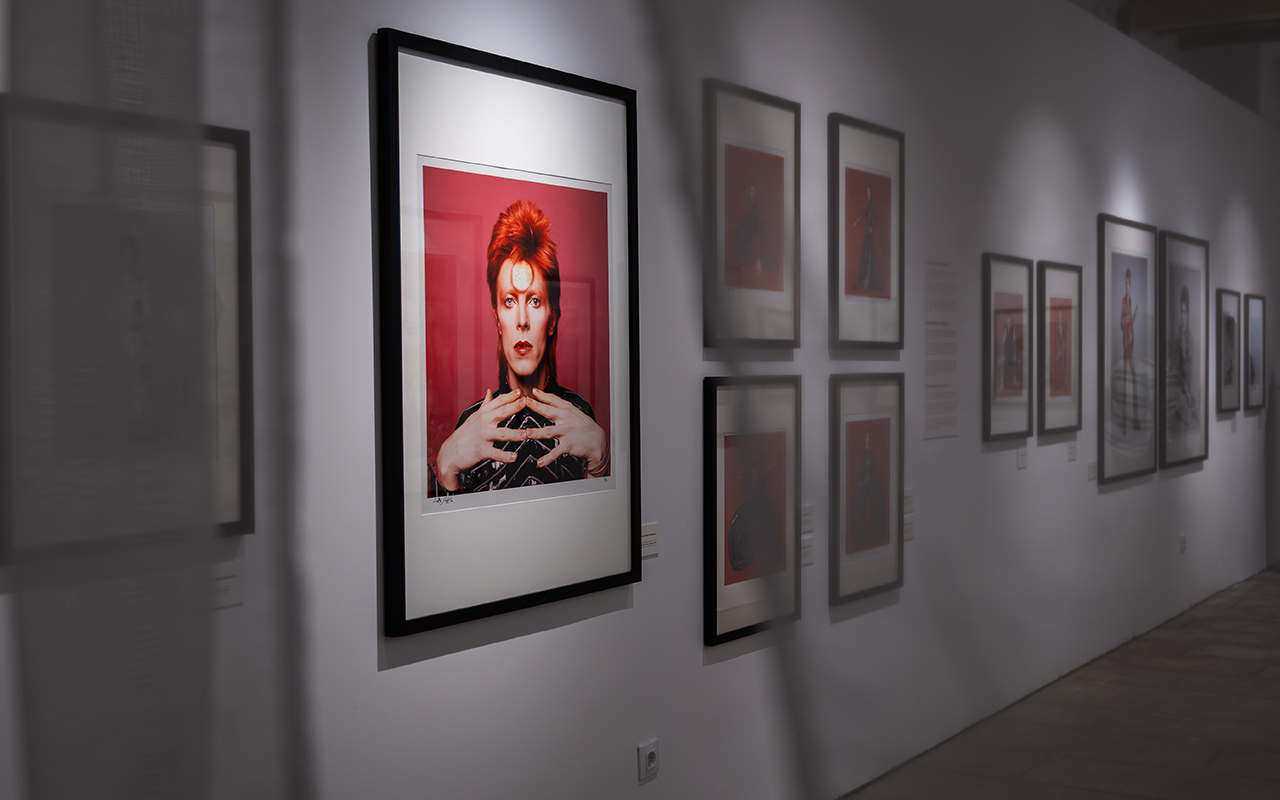
Bowie & Sukita Exhibition at Fotonostrum Gallery
There are artists who change their skin. David Bowie collected them all. Beyond his musical legacy, his image was a constantly evolving work of art. His wardrobe was his armor, his manifesto, his mirror. And photography, the medium that immortalized each transformation. The Bowie x Sukita exhibition, which can be visited at the FotoNostrum gallery in Barcelona until 15th September, invites you to immerse yourself in this chameleon-like universe through more than 70 iconic images captured by Japanese photographer Masayoshi. Sukita , one of the great witnesses of his metamorphosis.
Curated by the Italian group Ono Arte, this intimate and visual exhibition draws a direct line between Bowie’s aesthetic and his artistic restlessness. From his beginnings as Ziggy From Stardust in the 1970s to his later years, each selected image reveals a new incarnation of the artist. Sukita ‘s lens remains with him for more than four decades: she observes him, understands him, follows him. And in return, Bowie offers her more than just poses. He gives her a developing persona that metamorphoses at each stage and, without the need for words— Sukita didn’t speak English—builds a profound bond between artists.
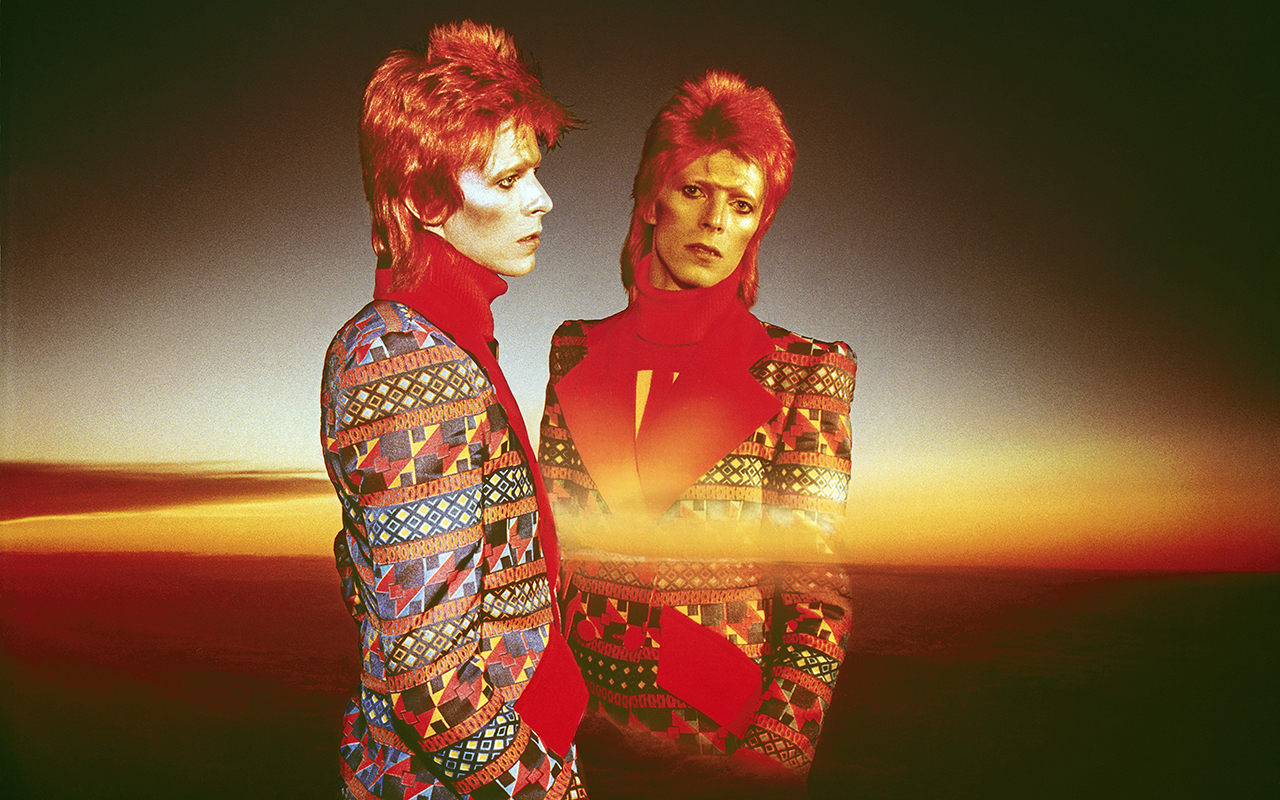
Down of Hope, 1973 © Photo by Sukita
A relationship sealed by the image
Their first contact arose sporadically in London in 1972, when Sukita traveled from Japan to photograph Marc Bolan of T-Rex and ended up meeting Bowie at one of his concerts. That first meeting marked the beginning of a sustained collaboration, which would give rise to one of the most recognizable images of the 20th century: the cover of the album Heroes (1977). But beyond this graphic icon, what emerges in this exhibition is the complicity between two creators who understand each other through intuition and silence.
In the images, we see Bowie as we knew him—radical, provocative, ethereal—and also as we’ve never seen him before: serene, introspective, almost domestic. The exhibition also includes lesser-known photographs taken in Japan, a country that inspired the artist with its refined aesthetic, symbolic theatricality, and visual culture. These scenes exude a different calm, a more deliberate Bowie, but just as magnetic.
Costume as a narrative
Bowie never dressed casually. Each outfit was a statement of intent. His wardrobe oscillated between futurism and nostalgia, androgyny and exaggeration, craftsmanship and artifice. In these photographs, fashion ceases to be decoration and becomes visual text: a metallic latex jumpsuit, a military-inspired suit, a geometric ensemble with oriental reminiscences… The fabrics that envelop him tell stories without words.
Extreme silhouettes, shiny textures, impossible collars, gravity-defying sleeves. The choice of materials—patent leather, lurex , velvet, lamé —constructed a silent choreography that dialogued with the music and the gesture. Bowie understood that a suit could sing on its own, and that a clothed body was also a clothed idea.
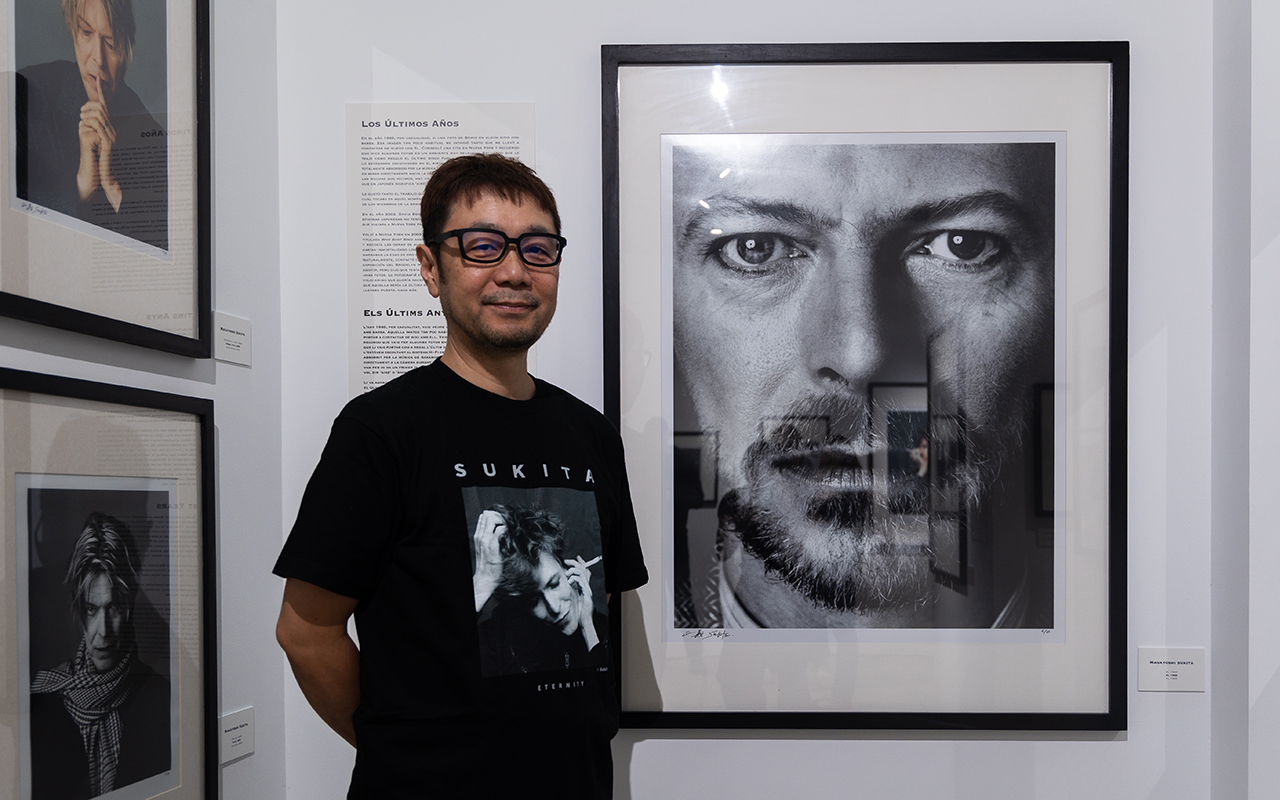
Aki Sukita, nephew of the renowned Japanese photographer, at the gallery. Pic by Fotonostrum
Sukita : the eye that intuited the myth
Masayoshi Sukita, born in Japan in 1938, came from the world of men’s fashion photography. His eye was trained to detect gestures, details, silences. Fascinated by urban subcultures and psychedelic rock, se attended Woodstock and photographed artists such as Iggy Pop, Joe Strummer , Devo , and YMO. But it was with Bowie that he found a true dialogue.
Sukita didn’t seek to capture the obvious, but the invisible. His mastery of composition, light, and scenic balance allowed him to create atmospheric, almost cinematic portraits. Many of the images that are now part of the collective imagination are born from this artistic bond and a trust forged over time.
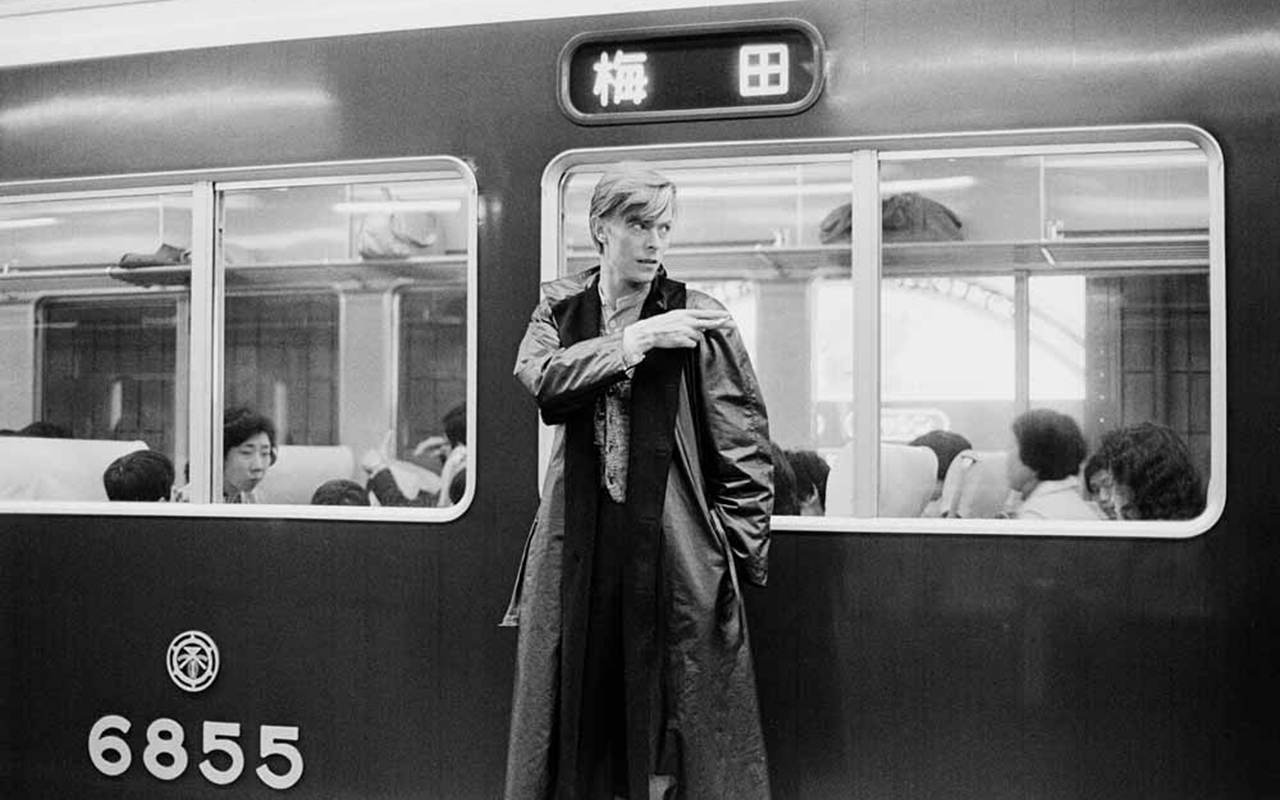
A Day in Kyoto 6 – Departure, 1980 © Photo by Sukita
A journey through style as freedom
Visiting Bowie x Sukita is like immersing yourself in an emotional archive where photography and fashion interact without hierarchy. There are intimate portraits, staged sessions, and concert photographs that capture the electricity of live performance. Each snapshot is an open door to the universe of an artist who made his body a canvas and his wardrobe a manifesto.
Today, designers, artists, and textile lovers continue to draw on his legacy. Because Bowie didn’t just dictate trends: he shattered them. He was haute couture without a runway, glam without gender, avant-garde without nostalgia. And that free, brave, and deeply visual spirit connects with the soul of Gratacós, where each fabric is also a creative act.
Practical information
📍 Bowie x Sukita
From May 23 to September 15, 2025
FotoNostrum – Carrer Princesa 19, Barcelona
www.fotonostrum.com
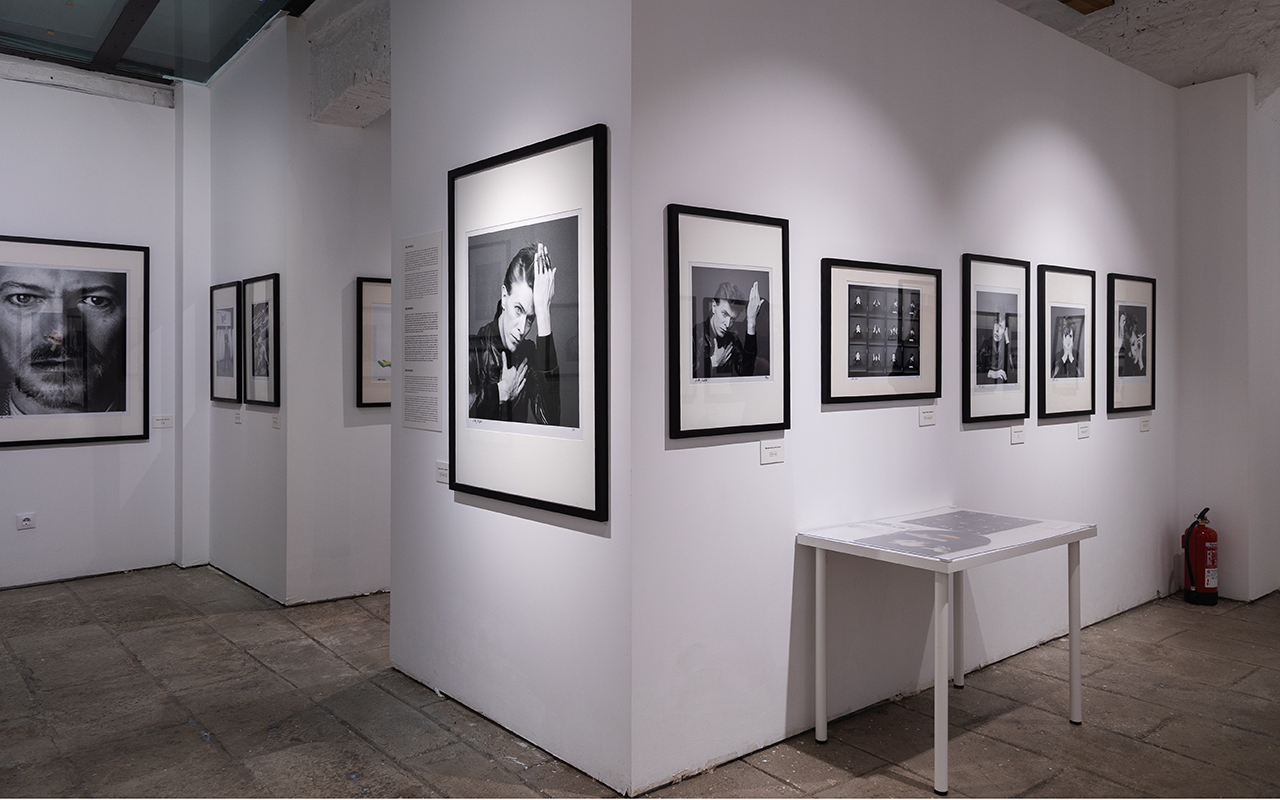
Sorry, this entry is only available in European Spanish.

Fotografía: Paula Caballero
If there is a designer who understood fashion as a spectacle, it was Gianni Versace. He did not limit himself to creating clothes; he built his own universe, where excess was synonymous with elegance and pop culture was mixed with classical mythology. Now, his essence re-emerges in Gianni Versace Retrospective , an exhibition never seen before in Spain organized by Fundación Unicaja that lands in Malaga with more than 500 original pieces to take a tour through the mind of the Italian genius.
The exhibition is housed in the historic building of the Episcopal Palace and, across nine thematic sections, invites us to explore its inspirations, from Classical Greece to the vibrant Miami Beach scene in the 90s. Between shiny fabrics, baroque prints – such as the iconic Barocco – and looks that defined the era of the Supermodels, this exhibition reminds us that the Versace legacy is more alive than ever.
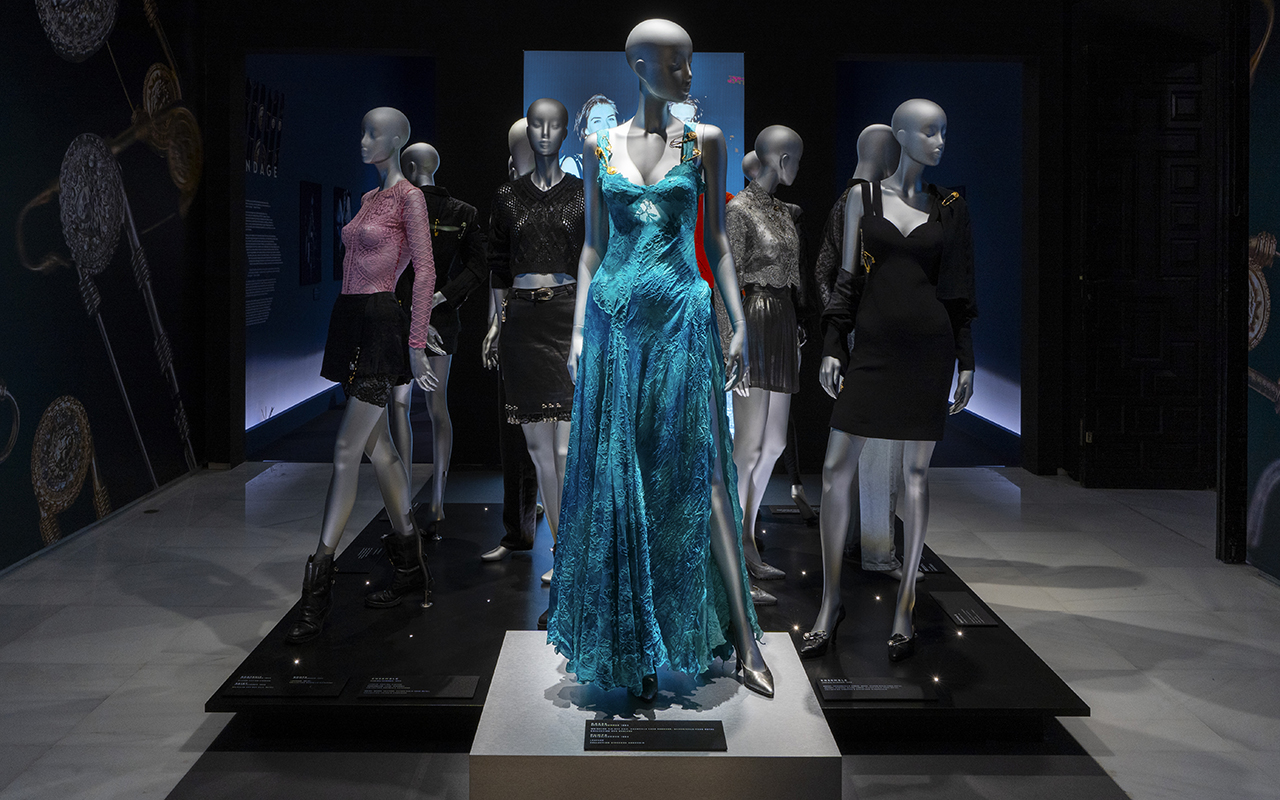
Fotografía: Paula Caballero
The designer who made fashion a spectacle
Gianni Versace didn’t just revolutionize fashion, he redefined it. In the 80s and 90s, his shows were events where supermodels walked like modern goddesses and the clothes screamed power and sensuality. His creations also dressed stars like Madonna, Prince and Elton John, cementing him as the designer of icons.
His ability to mix cultural references from different eras and geographies turned his designs into wearable pieces of art. From Greco-Roman classicism to punk aesthetics, Versace absorbed everything that inspired him and transformed it into something unique. His approach to fashion was instinctive and deeply visual: he was not afraid of colour, exuberant patterns or bold silhouettes. His brand became synonymous with daring luxury and boundless glamour.
The exhibition is unprecedented in Spain and captures that spirit, from his beginnings in Calabria, his arrival in Milan and his fascination with art and architecture to his last collection in 1997, before he was murdered. Through his most iconic looks, original sketches and previously unpublished photographs, Gianni Versace Retrospective immerses us in his creative process.
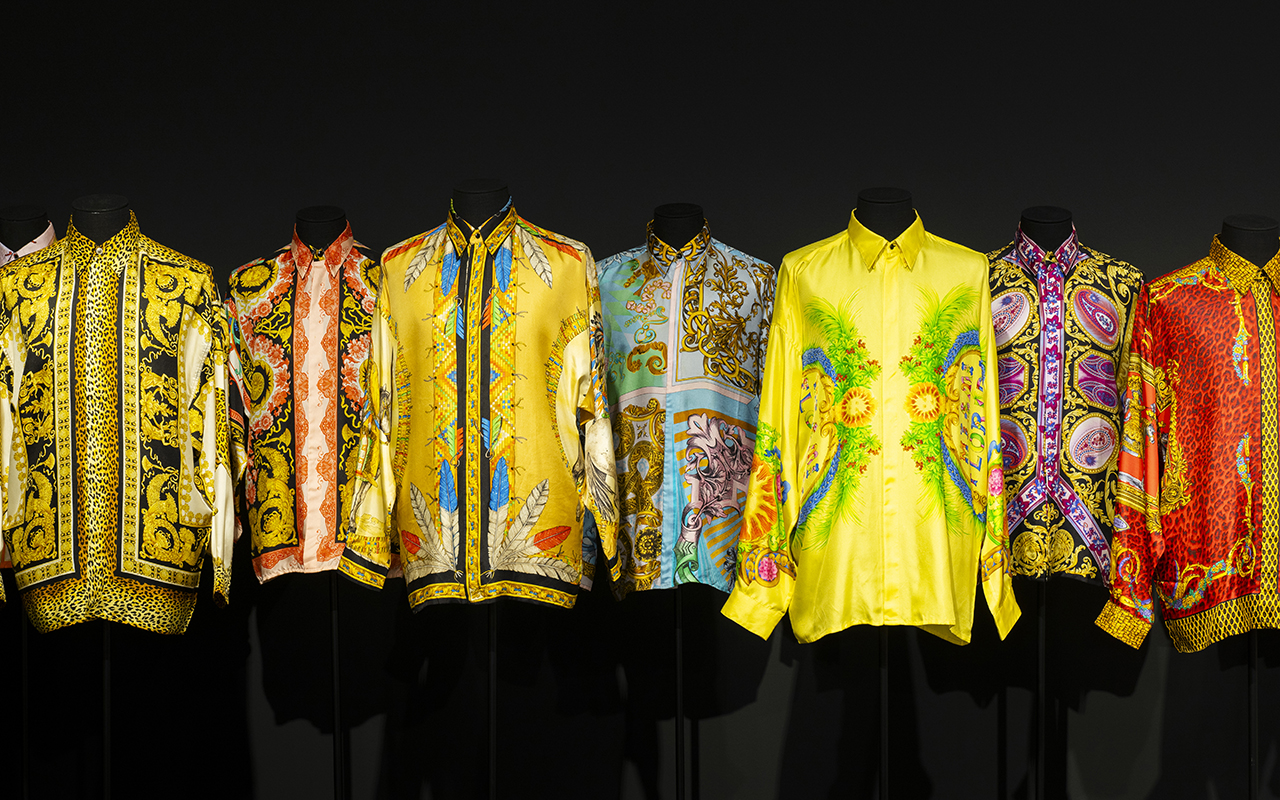
Fotografía: Paula Caballero
The keys to understanding the soul of Gianni Versace
The exhibition is structured into nine spaces that capture some of the key aspects of Gianni Versace’s imagination, evident in all of his designs.
Inspiration from Greco-Roman mythology : Versace’s fascination with classical antiquity is reflected in his recurrent use of mythological iconography. The Medusa, which became the brand’s emblem, symbolised irresistible attraction and power. His collections incorporated motifs of Ionic columns, golden friezes and depictions of gods, fusing the opulence of imperial Rome with a modern vision of luxury.
Baroque splendour : No one like Versace at mixing gold, classical motifs and excess without losing sophistication. Inspired by art, the Christian religion and Italian architecture, his use of ornamentation and rich fabrics made him a master of maximalist luxury. Despite this, the exhibition also reveals his minimalist side towards the mid-90s. An interesting exercise in stylistic contrasts.
The magic of South Beach : Miami was his refuge and his muse. The Art Deco aesthetic, classic cars and multicultural energy of the city were reflected in his 90s collections. The light, colours and vitality of the city influenced the vibrant prints and marine motifs that characterised some of his most memorable collections.
Art and pop culture : Inspired by Warhol and the repetition of images, Gianni Versace created unforgettable prints. Versace understood before anyone else that fashion should dialogue with popular culture, and his collaborations with artists marked a turning point in the relationship between fashion and art.
Supermodels of the 90s : The Italian couturier elevated Cindy, Naomi, Claudia and Linda to the status of goddesses. He not only designed for them, but helped shape the modern concept of the “supermodel” by turning his shows into media extravaganzas. His 1991 show, where top models walked to George Michael’s Freedom , is an iconic fashion moment.
The power of provocation : She redefined rebellion with leather, studs and harnesses. Her reinterpretation of punk and fetish aesthetics proved that fashion could play with boundaries without losing its sophistication. The iconic Bondage collection of 1992 turned traditionally provocative elements into haute couture pieces that challenged established norms.
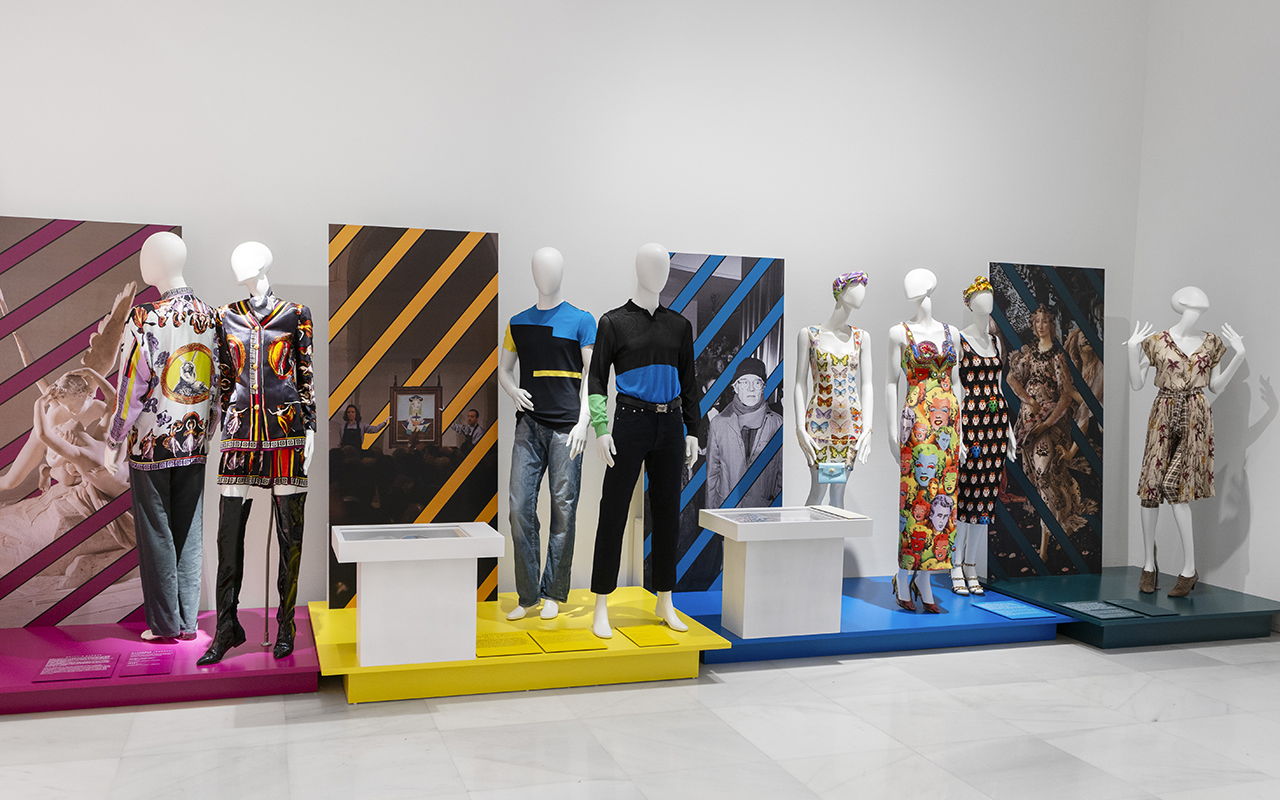
Fotografía: Paula Caballero
Fashion, culture and myths of the 90’s
Beyond the catwalk, Gianni Versace’s impact on popular culture was immense. His vision was cinematic, his shows were carefully orchestrated productions, and his approach to fashion broke with many of the conventions of the time. He pioneered a strong visual identity for his brand, integrating architectural elements, instantly recognizable prints, and a use of color that defied the trends of minimalism.
Versace also understood the power of image and marketing in fashion. He was one of the first designers to forge ties with the entertainment industry, dressing artists and creating moments that transcended the catwalk. Lady Diana, Madonna, Cher, Elizabeth Hurley… they all became ambassadors of his bold and sophisticated aesthetic.
Versace also made his mark in cinema and theatre, designing costumes for operas and films. His passion for dramatization and theatricality was reflected not only in his fashion, but in the way he presented his work to the world.
The legacy of a visionary
More than 25 years after his death, Versace’s impact is still felt. His influence can be seen on catwalks, red carpets and even in urban culture. The brand he founded, now under the direction of his sister Donatella, continues to reinterpret his aesthetic, keeping the DNA of the house alive.
The 1990s fashion revival has brought back into the spotlight many of the elements that Versace popularised: the tight-fitting clothes, the baroque prints, the fusion of luxury and rebellion. Contemporary designers continue to find inspiration in his work, and his name remains synonymous with audacity and opulence.
This exhibition is not just a tribute, it is an invitation to relive the art of a designer who turned fashion into a statement of intent. To immerse oneself in his universe is to understand how fashion can be much more than clothing: it is identity, it is art and it is history.
The Gianni Versace Retrospective exhibition will be open to the public until the 30th June at the Unicaja Foundation Cultural Center in Malaga.
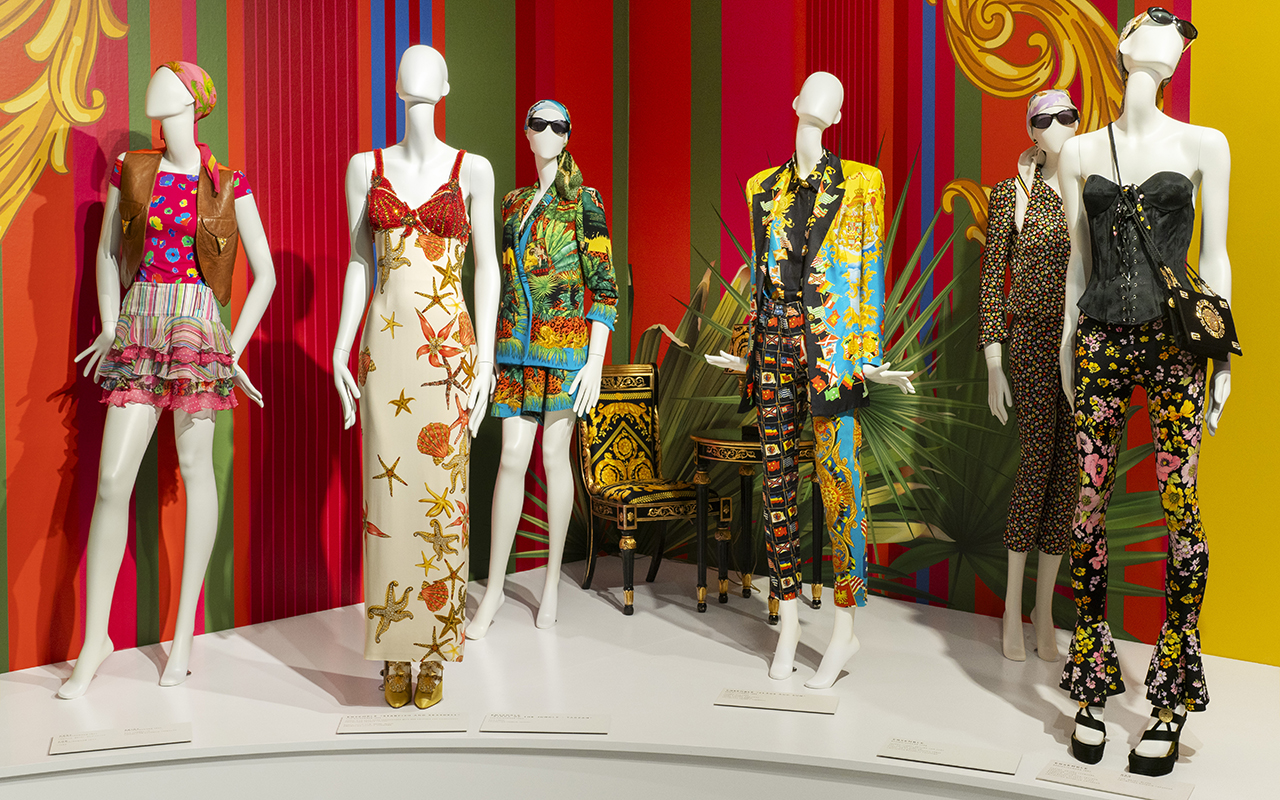
Fotografía: Paula Caballero
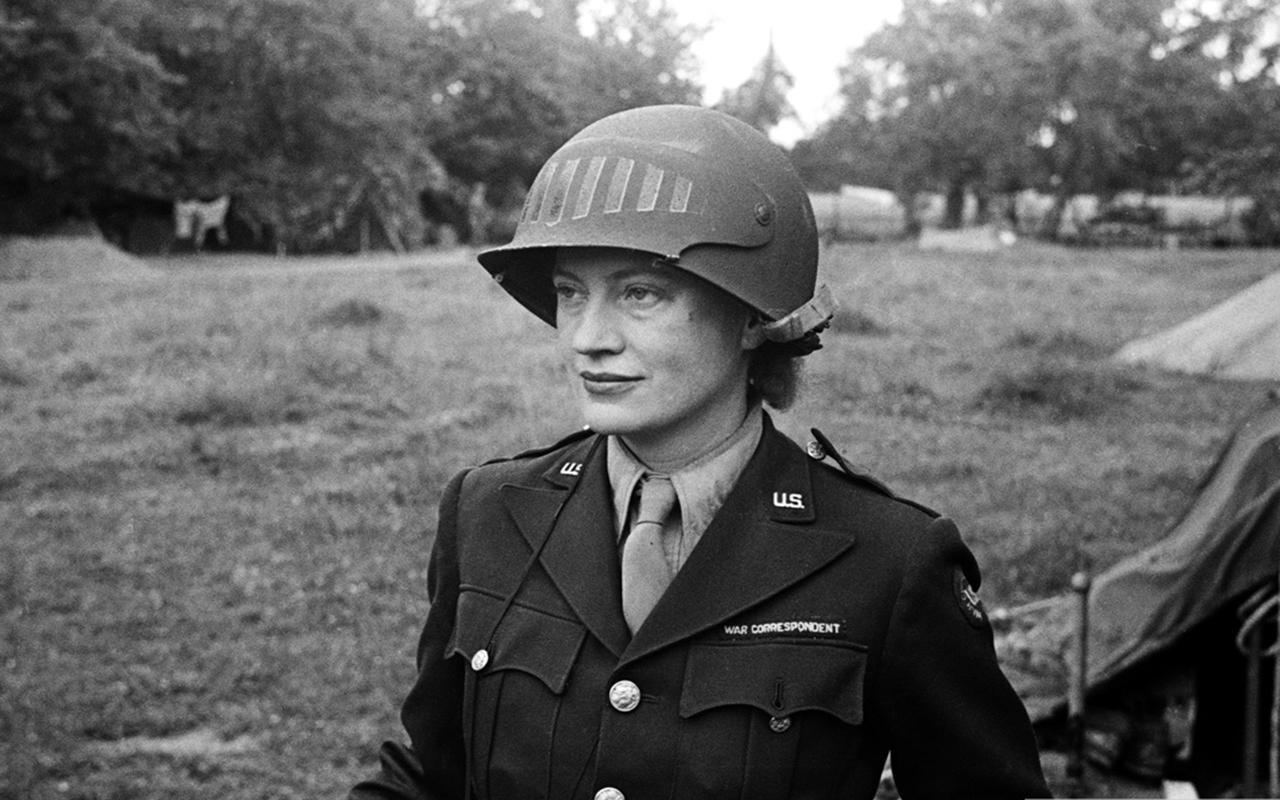 Lee Miller, con un casco prestado por el fotógrafo del ejército estadounidense Don Sykes (sargento), Normandía, Francia, 1944© LEE MILLER ARCHIVES
Lee Miller, con un casco prestado por el fotógrafo del ejército estadounidense Don Sykes (sargento), Normandía, Francia, 1944© LEE MILLER ARCHIVES
When we think of the Second World War, it is difficult to imagine that in the midst of chaos and devastation there was a woman who, camera in hand, captured some of the rawest and most revealing moments of the conflict. Also the most beautiful, revealing a new, more authentic side of the people who worked at the front. Lee Miller, one of the most daring photographers of the 20th century, comes to Barcelona with the exhibition War Chronicles, which can be visited at FotoNostrum until the 20th March, 2025.
Before becoming a war correspondent, Lee Miller was a haute couture model in New York, a muse to great artists such as Man Ray, and even a pioneer in photographic experimentation with the solarization technique. However, her restless spirit led her to reinvent herself again and again. It was in London, during the Luftwaffe bombings, that she found her true calling: telling the story with her lens.
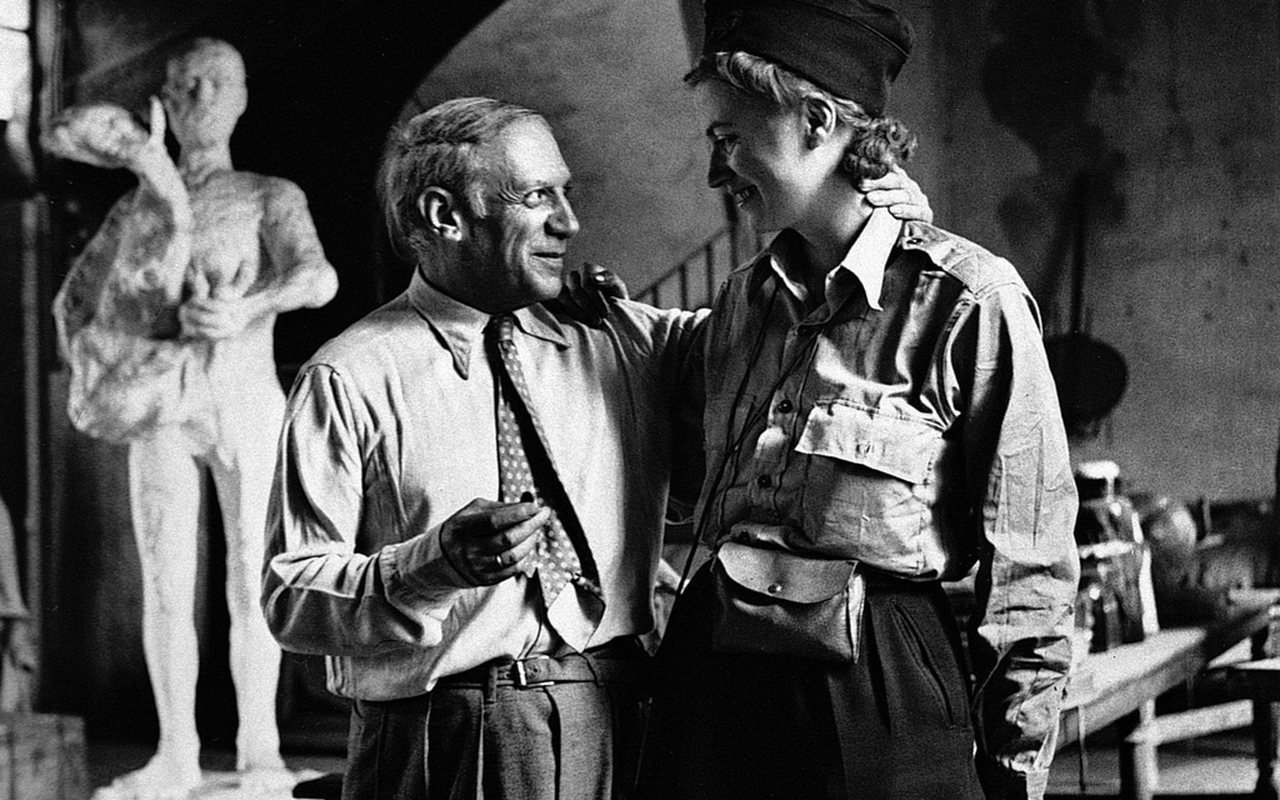 Foto del reencuentro de Picasso y Lee Miller en 1944 tras la liberación de París. Ella llegó como reportera con el Ejército de los EE UU© LEE MILLER ARCHIVES
Foto del reencuentro de Picasso y Lee Miller en 1944 tras la liberación de París. Ella llegó como reportera con el Ejército de los EE UU© LEE MILLER ARCHIVES
The exhibition
War Chronicles brings together 124 photographs, focusing on the period from 1940 to 1947, that trace Miller’s career as a war correspondent for the US Army. His lens captured the liberation of Paris, the concentration camps of Buchenwald and Dachau, and the scars of Europe after D-Day. His images are raw, moving and, above all, necessary to understand the impact of war.
Miller not only documented history, he also lived it first-hand. Images of that closeness stand out, such as the iconic image of Lee Miller in Hitler’s bathtub in Munich on the same day that the Nazi leader committed suicide, or a warm meeting during the liberation of Paris in 1944, where he met Pablo Picasso, with whom he had a friendship. “It’s incredible that the first soldier I see after the liberation is a woman, and that it’s you too!” the artist from Malaga exclaimed. Intimate portraits that Lee Miller also shared with Miró.
The exhibition also shows us her most versatile side, with some of her iconic fashion photographs that portray women in the 1940s, when they began to enter the workforce in factories, demonstrating that aesthetics and drama can coexist in the same work.
After the war, Lee Miller found solace in the kitchen, becoming a culinary innovator inspired by surrealism.
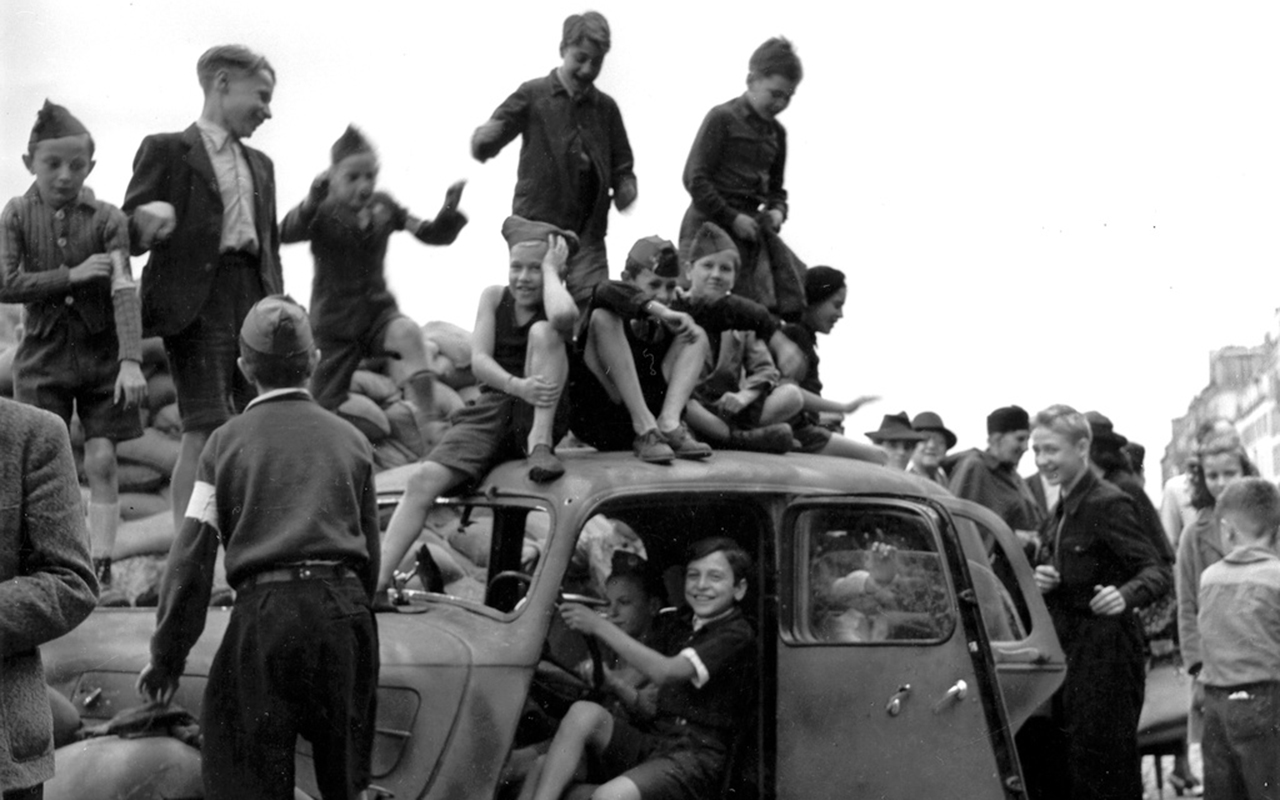
Niños celebrando la liberación de París en 1944 © LEE MILLER ARCHIVES
A family legacy
The exhibition also features Antony Penrose, son of Lee Miller and surrealist artist Roland Penrose, who attended the opening. Antony, a renowned filmmaker, writer and curator, has dedicated his life to preserving his mother’s legacy through the Lee Miller Archives and the Penrose Collection. His son discovered his mother’s legacy when she died. In the attic were 40,000 photographs were found depicting the horror of the Great War, which his mother had kept quiet about due to the psychological trauma that led to alcoholism and depression. “I had no idea about my mother’s past; my view of her changed completely,” Penrose confesses. Thanks to his tireless work, Miller’s images have been exhibited in museums around the world, allowing new generations to discover their importance in the history of photography and art.
Together withhis daughter Ami Antony Bouhassane, co-director of Farleys House & Gallery Ltd., he has worked to promote Miller’s work, ensuring that her story continues to inspire future artists and photographers. Both bring a unique and intimate testimony that enriches the exhibition, offering a personal look at the life and work of this legendary photographer.
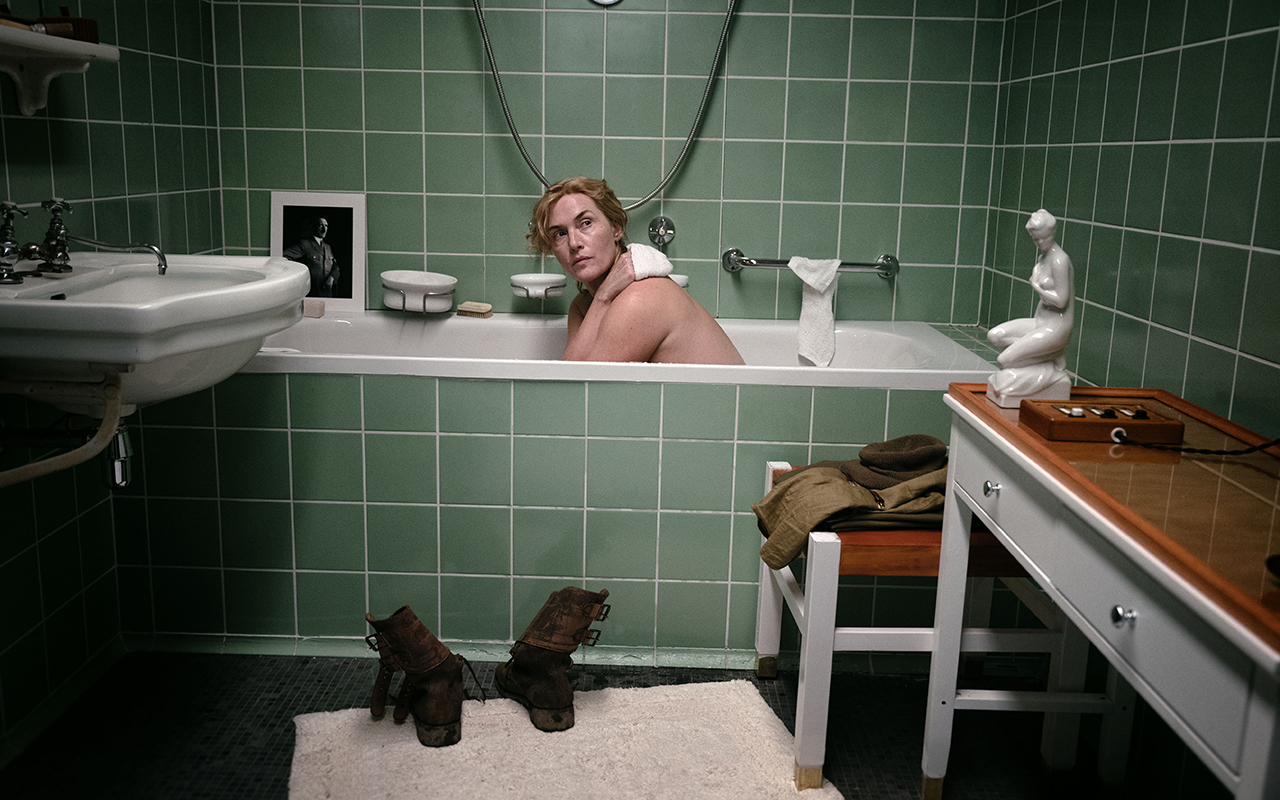
Kate Winslet reproduce la célebre foto de Lee Miller en la bañera de Hitler para la película sobre la fotógrafa. ©SKY UK
A life of cinema
Lee Miller, starring Kate Winslet and directed by Ellen Kuras , will be released in Spain on the 7th March 2025. The feature film delves into the life of this extraordinary woman, exploring the challenges she faced in a world dominated by men. Winslet ‘s performance has been widely praised, offering a new perspective on Miller’s complex personality. In fact, in the exhibition Winslet herself recalls several scenes from the filming that have attempted to maintain the essence of Lee Miller’s photographs.
Lee Miller was much more than a witness to history: she was a protagonist who knew how to capture beauty and horror in equal measure. Now, Barcelona has the opportunity to rediscover her. The exhibition will be available at FotoNostrum , at Calle Diputació , 48 in Barcelona, and promises to be an essential experience for lovers of photography and history. Totally recommended!
 Irving Penn.Centennial by Fundación MOP
Irving Penn.Centennial by Fundación MOP
He was an icon of fashion photography and his revolutionary vision can now be remembered in Spain. The Marta Ortega Pérez Foundation (MOP Foundation) takes a further step in creating bridges between photography and fashion with the exhibition Irving Penn: Centennial. This is the largest retrospective dedicated to the talented American photographer ever presented in Spain. A symbolic exhibition that covers the 70 years of his prolific career, which has already been shown in New York, Paris and Berlin.
Irving Penn: Centennial is an exhibition organized by The Metropolitan Museum of Art in New York, in collaboration with the Irving Penn Foundation and curated by Jeff L. Rosenheim , Joyce Frank Menschel Curator in Charge of Photography at The Met . The exhibition can be visited free of charge until the 1st May 2025 at the MOP Foundation exhibition centre, located in the port area of A Coruña.
A journey into the soul of Irving Penn’s photography
Created in 2017 to mark the centenary of the artist’s birth, Irving Penn: Centennial is a tribute to his prolific career in all its breadth, from his beginnings in the late 1930s to the early years of the 21st century. What is most interesting about the exhibition is that it allows us to delve deeper into the photographer’s work beyond his best-known projects. This is precisely the aim of the exhibition: to cover all facets of Penn’s work, including fashion photography, delicate female nudes, floral compositions and still lifes, the still lifes of everyday objects that he was fond of throughout his life.
The exhibition also highlights the portraits of personalities who made him famous, such as his muse Lisa Fonssagrives, Pablo Picasso and Marlene Dietrich, as well as his photographic series documenting ordinary people captured in different corners of the world. It also includes unique pieces such as the backdrop of his studio and unpublished works that allow the visitor to delve into his creative process. Altogether, the exhibition brings together more than 160 works that offer a complete overview of the career of an artist who revolutionised the visual language of the 20th century.
 Irving Penn.Centennial by Fundación MOP
Irving Penn.Centennial by Fundación MOP
A democratic look
The exhibition is the perfect excuse to decipher Irving Penn’s legacy and understand his role in fashion photography, a field that transcended to create a unique visual universe. His motto, “less is more”, remains a reference for artists and creatives, reminding us that beauty can be found in the essential and the simple.
Vogue magazine redefined visual standards through a style that combined simplicity with sophistication. His images, characterized by a minimalist use of space and neutral backgrounds, transformed the perception of commercial and fine art photography. With an avant-garde approach, Penn turned the everyday into art, immortalizing everything from iconic figures such as Audrey Hepburn and Miles Davis to objects as common as cigarette butts.
The exhibition also highlights his technical mastery: Penn revived techniques such as platinum-palladium printing and experimented with materials to achieve a unique quality in his photographs. Each image reveals his ability to capture the essence of his subjects, transcending documentation and creating pieces charged with emotion and symbolism.
Supplementary materials
To enrich the experience, the MOP Foundation has exclusively published a catalogue in Spanish of the exhibition, a must for admirers of Penn’s work and 20th-century photography. This volume brings together almost 300 images, including iconic and previously unpublished works, accompanied by essays that explore the main themes of his career.
In addition, as every year, visitors will be able to enjoy a new set designed specifically for the exhibition, both inside the warehouse and in the outer space. The venue has also reopened its bookstore, specialising in photography, fashion, design and other artistic disciplines.
A legacy that endures
Irving Penn: Centennial exhibition becomes the fourth major retrospective promoted by the MOP Foundation, reaffirming its commitment to photography, fashion and its connection with A Coruña. Since its creation, the Foundation has promoted highly relevant exhibitions, such as Peter Lindbergh. Untold Stories (2021-22), Steven Meisel 1993: A Year in Photographs (2022-23) and Helmut Newton: Fact & Fiction (2023-24).
Photos by:
Irving Penn. Picture of self, Cuzco, 1948© The Irving Penn Foundation
Irving Penn. Marlene Dietrich, New York, 1948 © The Irving Penn Foundation
Irving Penn. Woman in Chicken Hat (Lisa Fonssagrives-Penn), New York, 1949 © The Irving Penn Foundation
Irving Penn. Naomi Sims in Scarf, New York, ca. 1969 © The Irving Penn Foundation




Sorry, this entry is only available in European Spanish.
 Exhibition ‘Dressing a Garden’. All photos published are provided by: Museum of Costume CIPE.
Exhibition ‘Dressing a Garden’. All photos published are provided by: Museum of Costume CIPE.
It has been a while since we recommended an exhibition, and we have just found a surprising exhibition that connects head-on with some of our most recurring inspirations and, specifically, with the floral theme of the 2024 Lookbook. The Madrid Costume Museum has just released the ‘Dressing a Garden’ exhibition, an exhibition curated by Gema Batanero that focuses on connecting nature with fashion through floral motifs as the backbone.
A historic binomial
Since ancient times, nature, and especially floral motifs, have been a constant source of inspiration for human beings. Like the self-portrait, flowers have focused attention and have become the first themes that humanity has captured in art and in all its cultural manifestations. This connection has endured over the centuries, especially in the field of fashion and interior design, where decorating with flowers meant a way of maintaining ephemeral beauty and union with the natural environment: the gardens, the countryside, the forests… In fact, each era has had its peculiar way of linking fashion and textiles with the language of flowers and doing so in an extraordinary way.
Starting from this historical premise, the exhibition “Dressing a Garden” at the Costume Museum explores how floral motifs in fashion evolved between the Baroque and the Enlightenment. This exhibition reveals how these floral representations reflect the profound changes in the relationship between humans and nature and the emergence of new artistic, scientific and philosophical ideas. Furthermore, the exhibition highlights how commercial exchanges and technological advances influenced the rapid transformation of these floral designs, making them a key testimony of the aesthetic taste of the 18th and early 19th centuries. Through the leitmotif of flowers, the exhibition also vindicates the study of creative and technical processes as a fundamental part in understanding the phenomenon of fashion, raising its transversality and continuous dialogue with different cultural fields.
 Detail of an 18th-century dress from the exhibition ‘Dressing a Garden’. All photos published are provided by: Museum of Costume CIPE.
Detail of an 18th-century dress from the exhibition ‘Dressing a Garden’. All photos published are provided by: Museum of Costume CIPE.
Floral motifs in more than a hundred pieces
The exhibition includes around 120 pieces, the core of which are collections of historical clothing and textiles from the 18th century and part of the 19th century from the Costume Museum. These pieces are accompanied by documentary and bibliographic collections, painting, ceramics and decorative arts from institutions such as the National Prado Museum, the National Archaeological Museum, the National Museum of Decorative Arts and the Royal Botanical Garden.
The first stop on the tour is titled “The Forest of the Furies” and places the visitor in the 18th century with an explosion of textile creativity: unusual fabrics, also called furies, due to the passionate and vibrant character of their decorative motifs. The exhibition continues with “A naturalistic still life”, which shows how, during the 1830s, the fanciful bizarre vegetations gave way to much more naturalistic representations. Starting in the 1940s, “The Line of Beauty” marks the evolution towards the Rococo style, characterized by its lightness and refinement.
Next, “The Flowers of Enlightenment” addresses the development of Enlightenment ideas and the return to the ideals of the classical world, marking a profound aesthetic change with respect to Rococo taste. “Gardens of the East” discusses how indianas, a textile phenomenon from India and the Middle East, made its way to Europe. The note of bucolic celebration is provided by “A country party”, which addresses the genre of the gallant party in Rococo and alludes to the social enjoyment of the countryside. Finally, the tour culminates in “The Return of Spring”, a space that explores how the relationship with nature is a constant in the lives of human beings, and how floral motifs, although they experienced an unprecedented boom in the centuries XVIII and XIX, are repeated cyclically throughout the history of fashion.
The exhibition is completed by a catalogue created by the General Subdirectorate of Publications and Palaces and Museums, which further develops the areas covered in the exhibition. The exhibition ‘Dressing a Garden’ can be visited for free until September 29th at the Madrid Costume Museum. A good opportunity to delight in this inspiring pairing: nature and fashion.
We took advantage of the exhibition to bring out some of our floral fabrics, which maintain a similar dialogue with some pieces on display. Let’s give rein to our imagination!



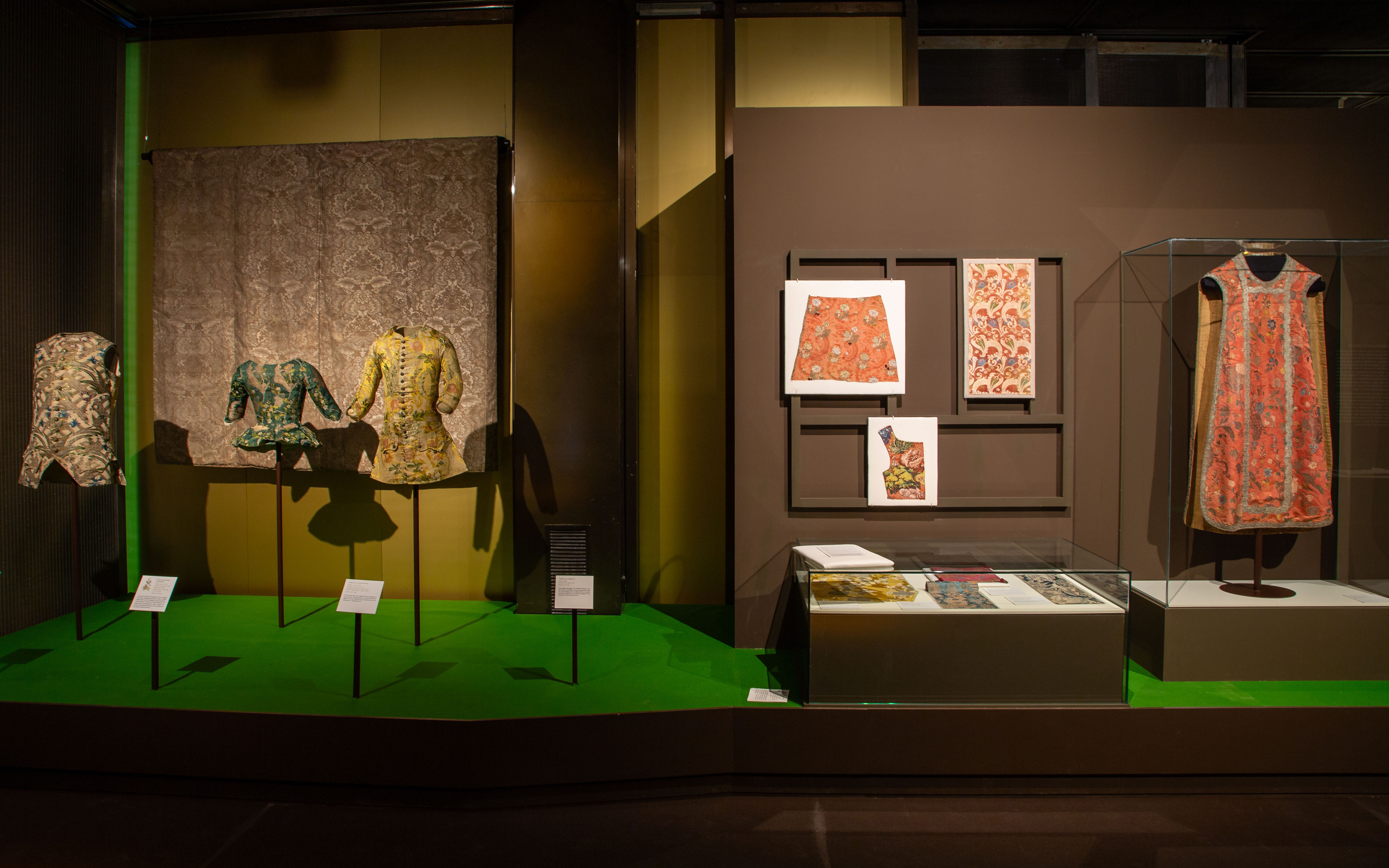


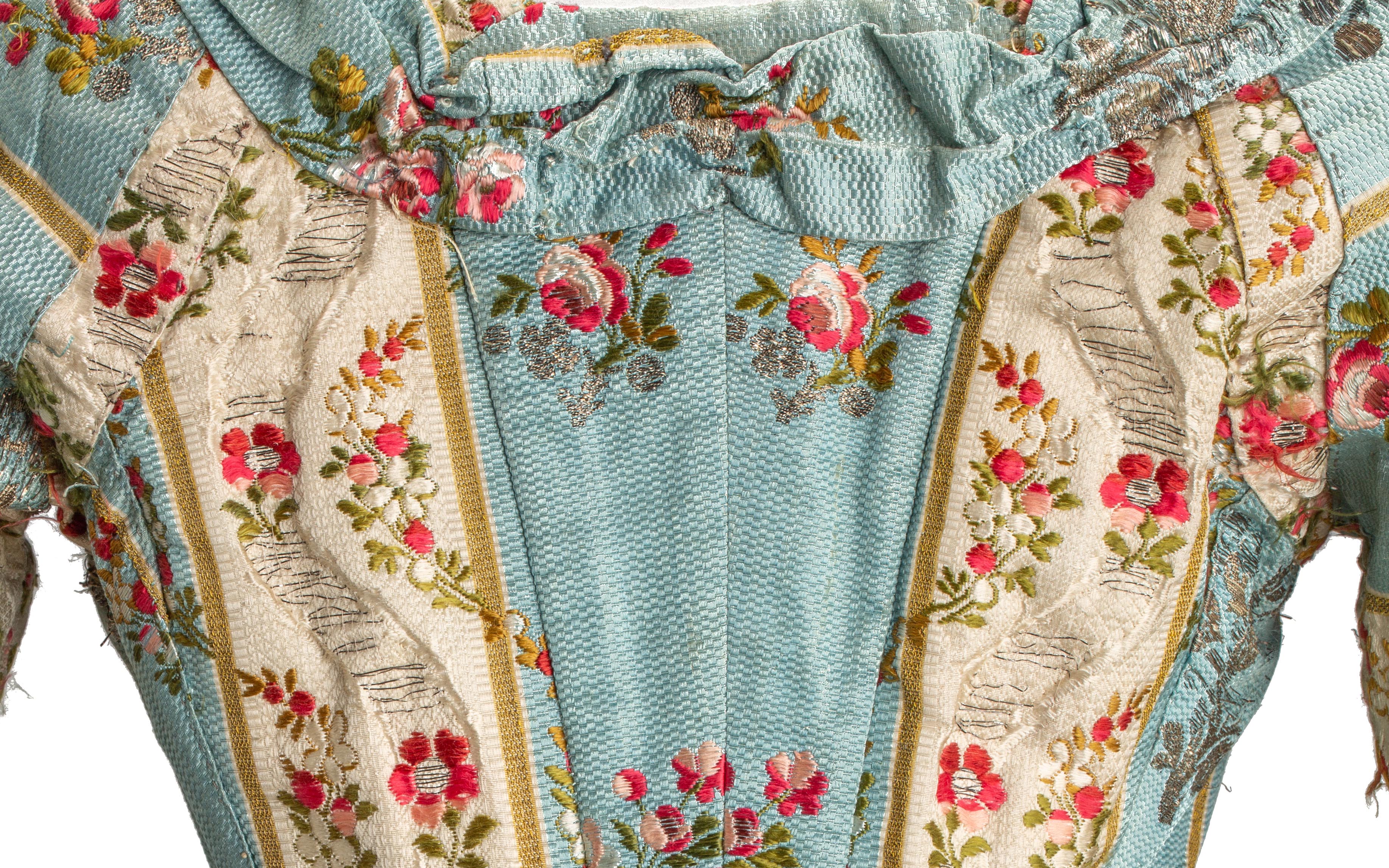
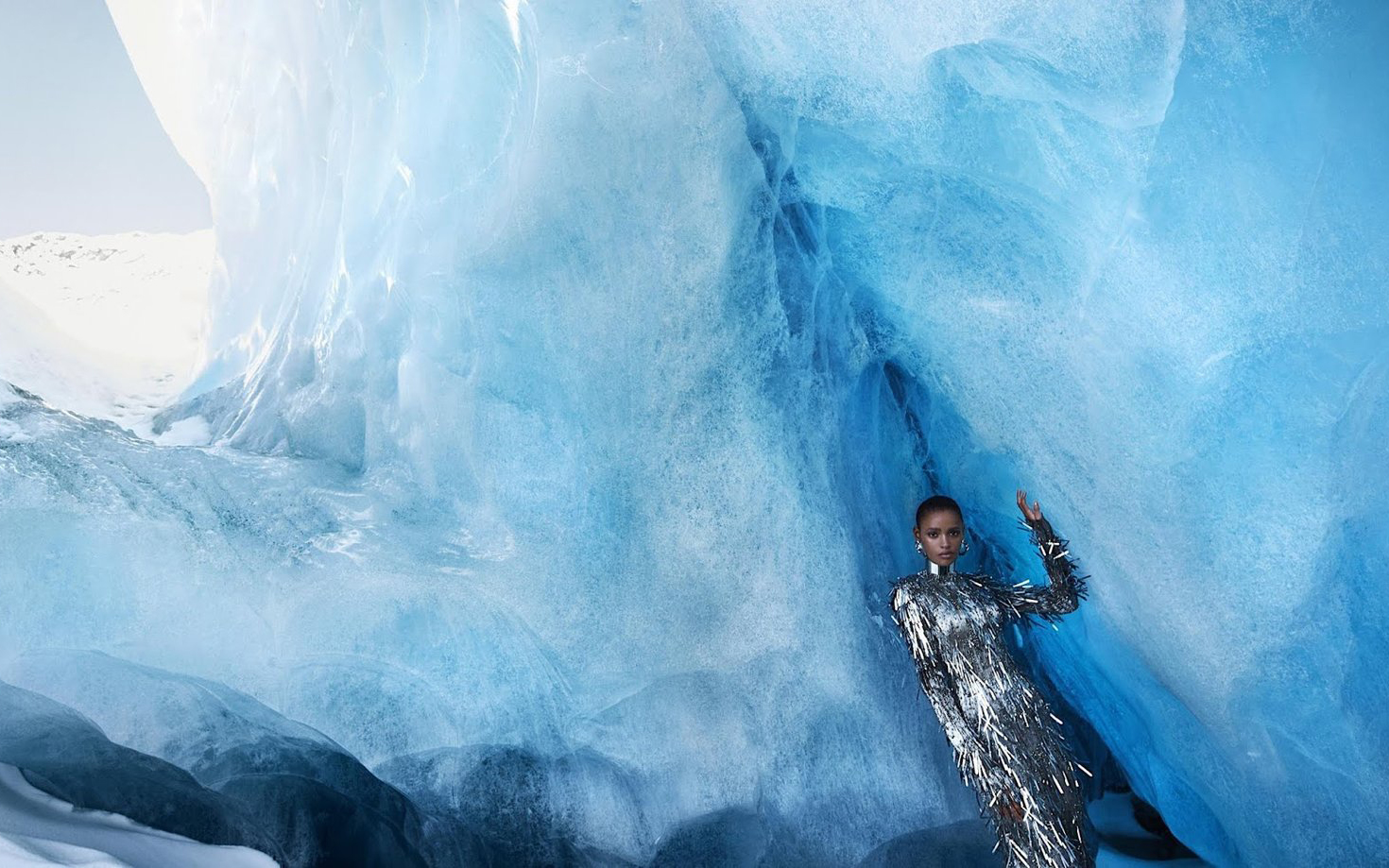 Aya Jones by Txema Yeste for Harper’s Bazaar US. September 2019
Aya Jones by Txema Yeste for Harper’s Bazaar US. September 2019
We start the new year by immersing ourselves in the coldest month of the calendar, when winter displays all its splendor. On this inspiring journey, we explore the dazzling glacial landscapes: the snowy roofs of our planet, the vast inhospitable expanses covered in a blanket of snow and ice, and the overwhelming poles, where sky and earth are barely distinguishable, and the spectrum of whites take over a homogeneous colour palette, where each small chromatic nuance is widely perceptible.
This frozen nature, with a rugged and wild character, where life struggles to make its way, is also loaded with beauty. In addition, it has recently gained notoriety thanks to film hits such as ‘The Snow Society’ by JA Bayona, which leads the Goya nominations, and series such as ‘Fargo’, which have once again brought Minnesota’s impressive landscapes to the fore. and North Dakota, making them perfect settings for criminal plots in each season.
Beyond a seasonal trend
Fashion has fallen in love with the appeal of icy universes, incorporating the influence of alpine clothing inspired by high mountain sports into its repertoire. This trend has been increasing in recent years, manifesting itself through après-ski collections that offer clothing and accessories both on and off the slopes. Initially promoted by the most prestigious brands in the sector, the strategy was later adopted by large fashion distributors, including Zara, which has launched its own ski collection.
Frozen landscapes have also served as a muse for numerous designers who find in these unknown, distant and mysterious environments, fresh sources of inspiration to structure their winter collections. A notable example is Zuhair Murad ‘s proposal in 2015, which transported the brand’s clients between snowy mountains, steep rocks and still unexplored corners. Murad, with his innate talent, managed to balance dreamy fabrics, inspired by the textures of snow, used in all his designs, and patterns with volumes that marked the waist. In 2021, Anthony Vaccarello of Saint Laurent presented his spring-summer collection in the frigid landscape of an Icelandic glacier. The models paraded among black volcanic rocks, mysterious vapors and gray waters with outfits that challenged the bourgeois codes of Saint Laurent.
More recently, Demna Gvasalia, creative director of Balenciaga, surprised the public at the presentation of his autumn-winter 2022/2023 collection by transporting them to a freezing snowstorm, surrounded by circular glass walls. The models, with languid steps and clothing reduced to improvised protection, paraded taciturnly in a frozen landscape marked by desolation. In this case, this icy setting served as Balenciaga’s artistic director to denounce the Ukrainian conflict.
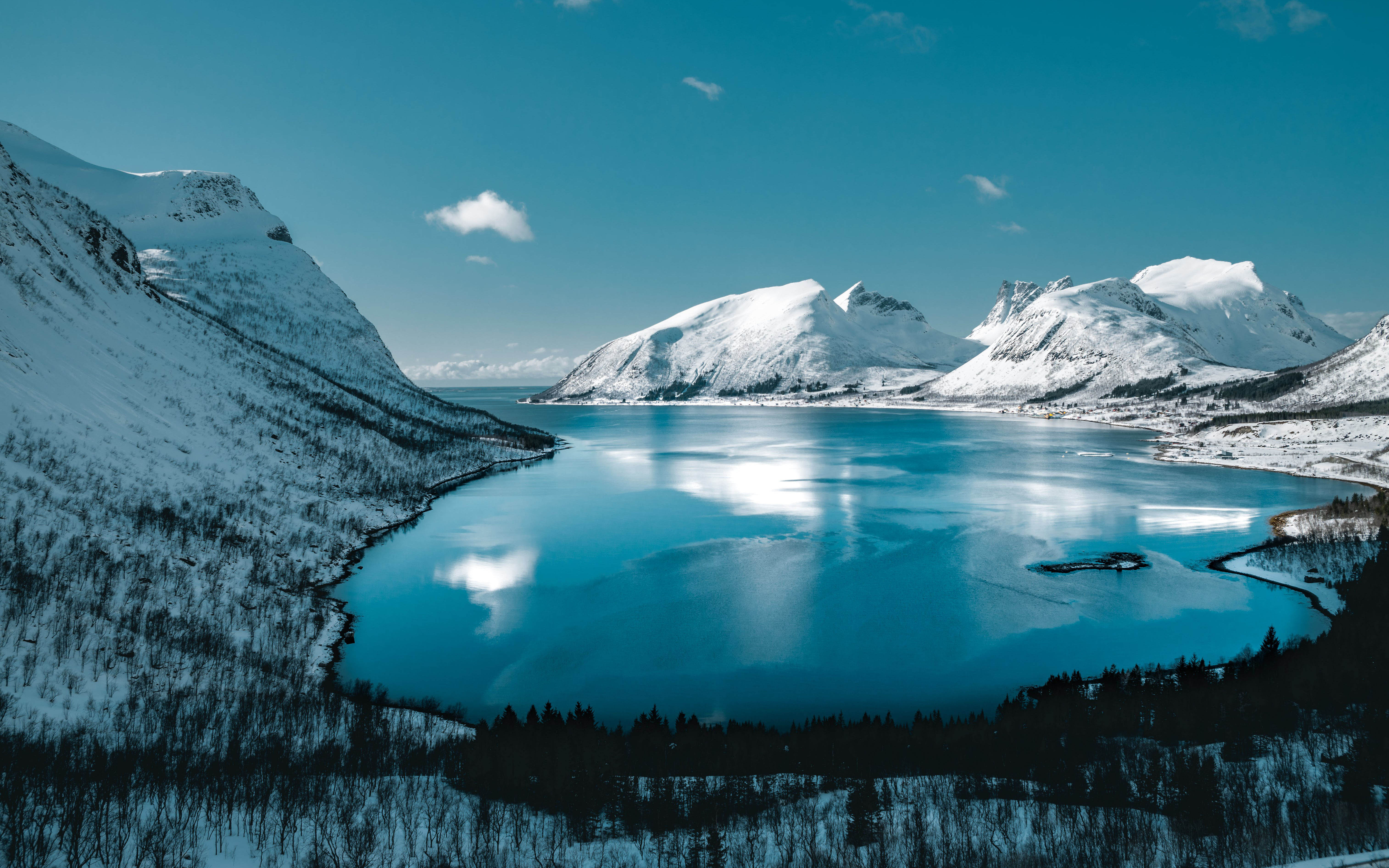
Gratacós is also inspired by the icy serenity of the glaciers
Gratacós delves into the dazzling aesthetic of glaciers to explore icy beauty through captivating fabrics that capture the serenity and elegance of icy landscapes. We let ourselves be inspired by pieces that evoke the purity of ice and virgin snow, as well as by those that dazzle with sequins or subtle sparkles and iridescence. Silk, the undisputed protagonist, unfolds with an ethereal fall reminiscent of the slowness with which ice moves.
Glacier fashion embraces textures that tell stories of intense cold. How? Through layers and folds that suggest superimposed blocks of ice, while the relief details provide a three-dimensional dimension, recreating the complexity of glaciers. Embroidered with silver threads and translucent crystals imitate the shine of sunlight on snow, adding a touch of sophistication to each fabric. Other fabrics embroidered with tulle and rhinestones could emulate layers of frozen snow. As for the relief, we imagine pleated or other fabrics with soft undulations that imitate the topography of glaciers, providing organic movement to the garments.
The colour palette of glacier fashion is inspired by the soft, cold tones of glaciers. Pure white and ice blue dominate the spectrum, creating a feeling of calm and freshness. We added touches of silver and pearl gray that represent the shimmer of light on the icy surface, while deep turquoise pays homage to the hues found in ice cracks. These colours, masterfully combined, reflect the serenity and majesty of glacial landscapes.
Find among the seasonal items in our online store, that icy inspiration we talked about so appropriate for the winter season.
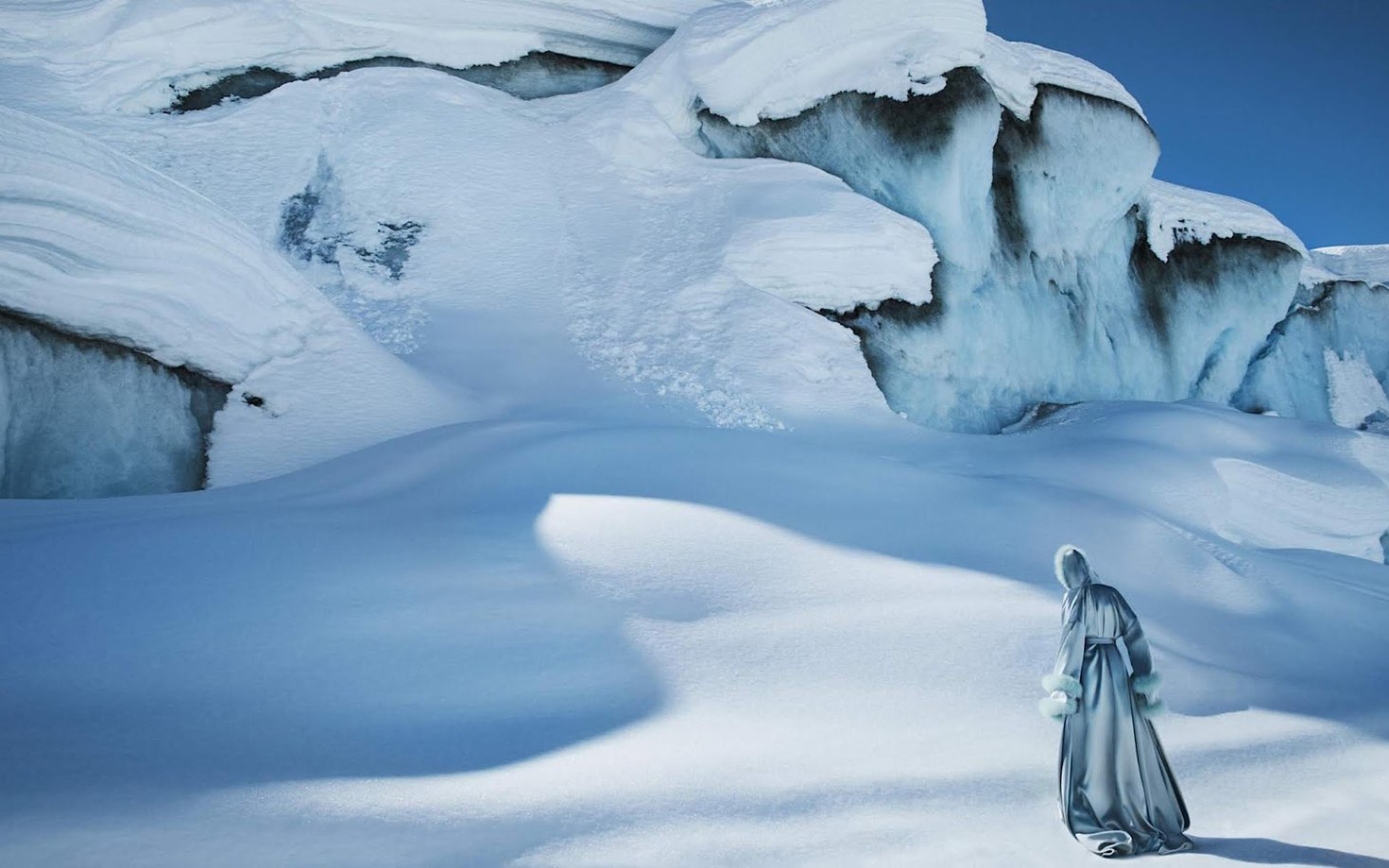
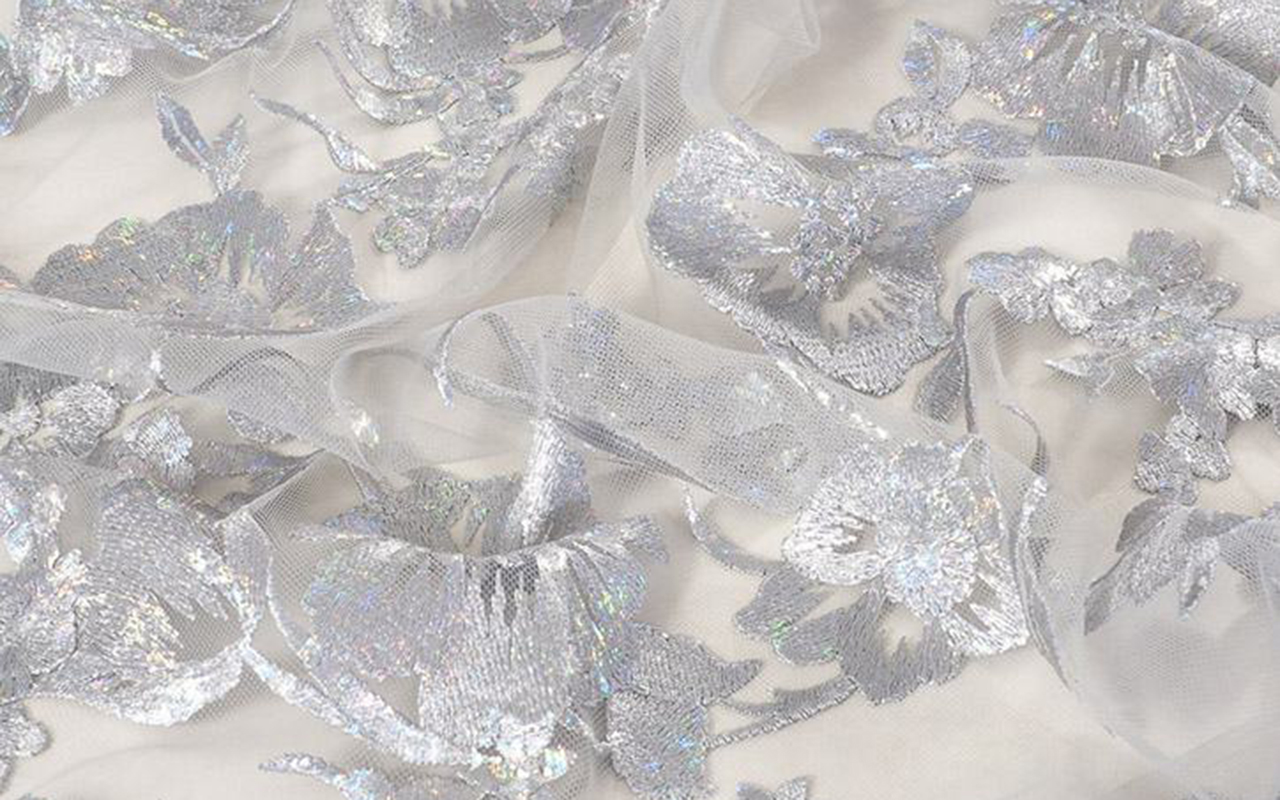

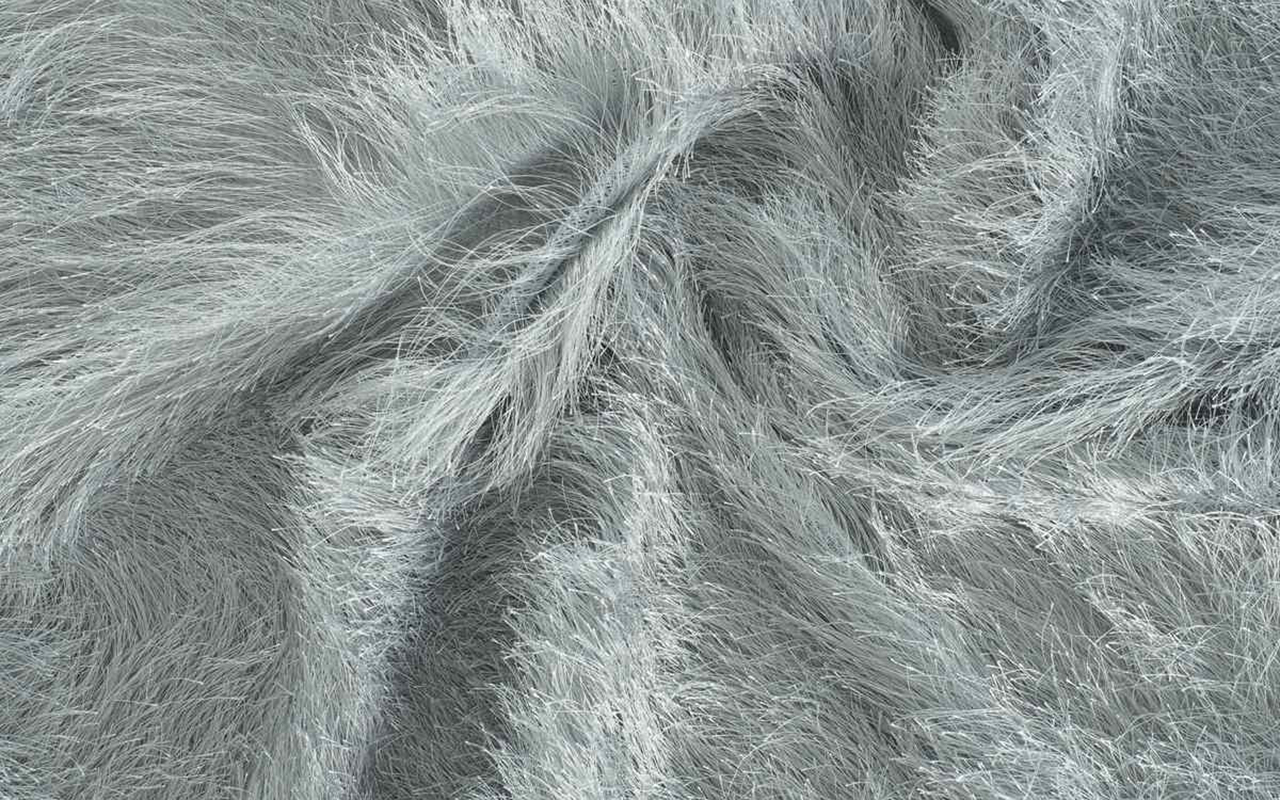
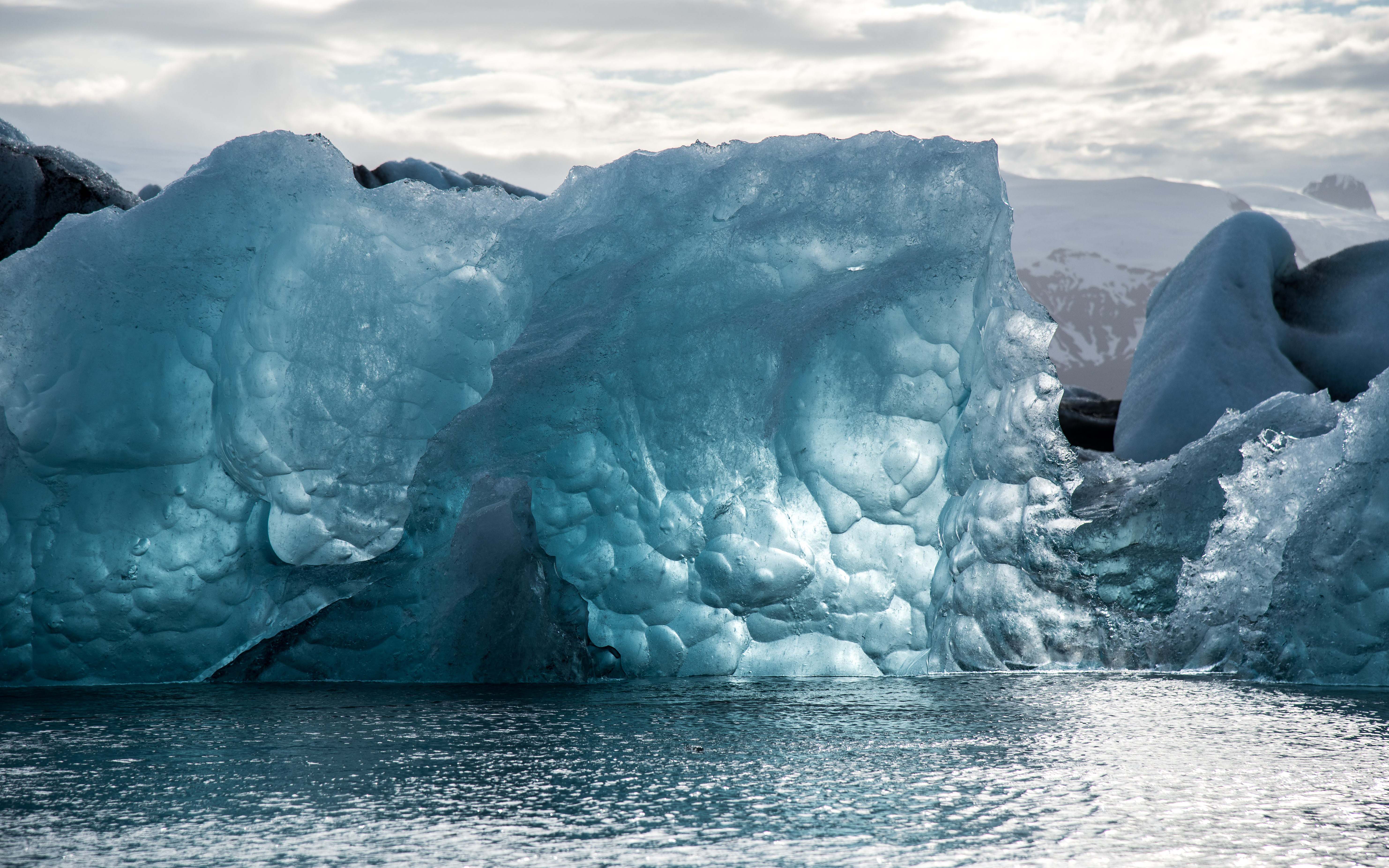
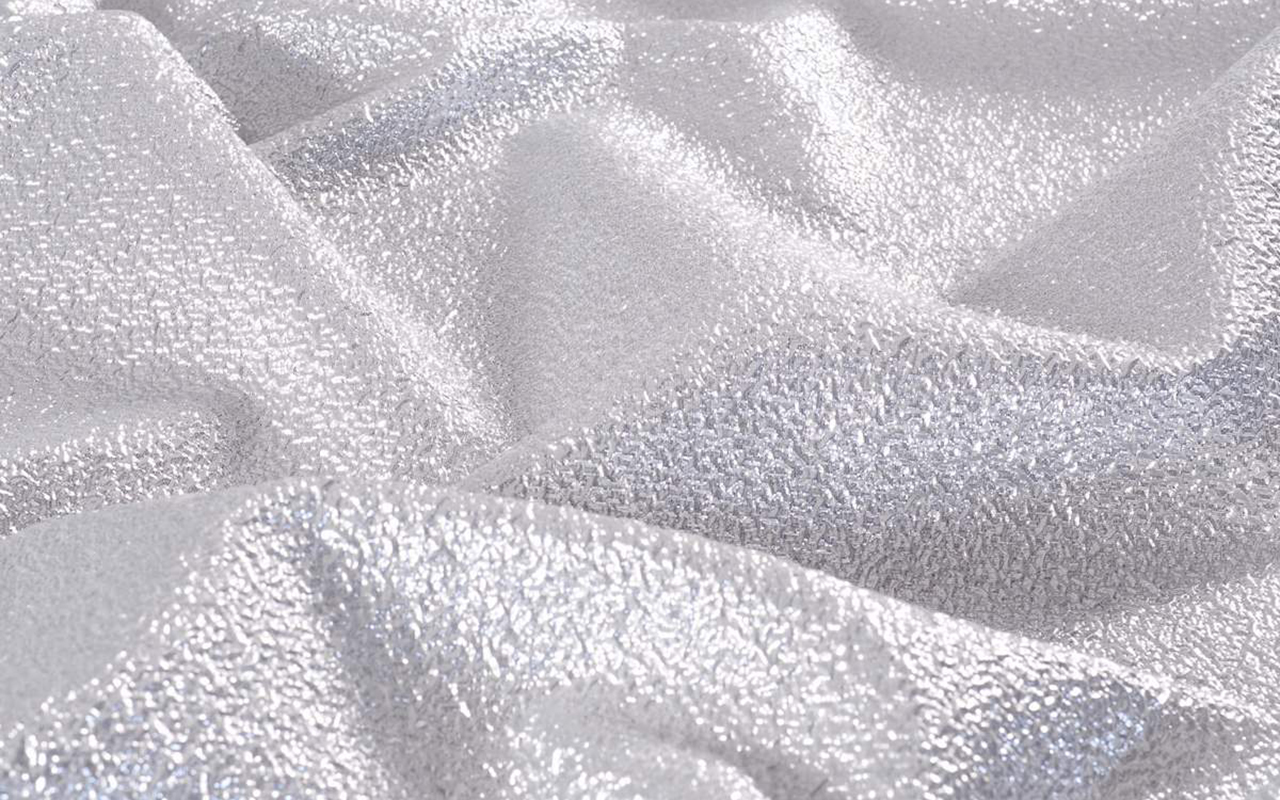
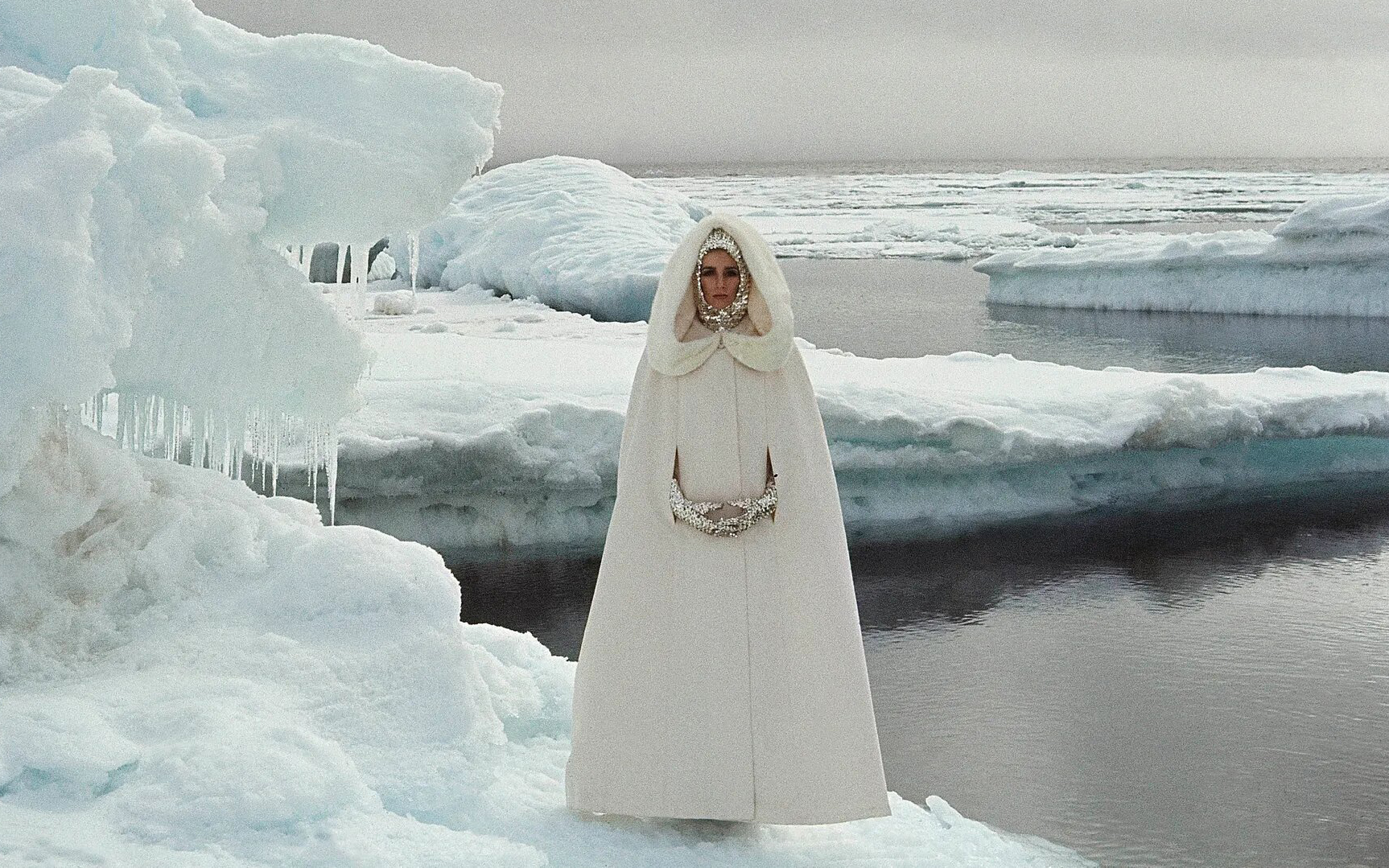
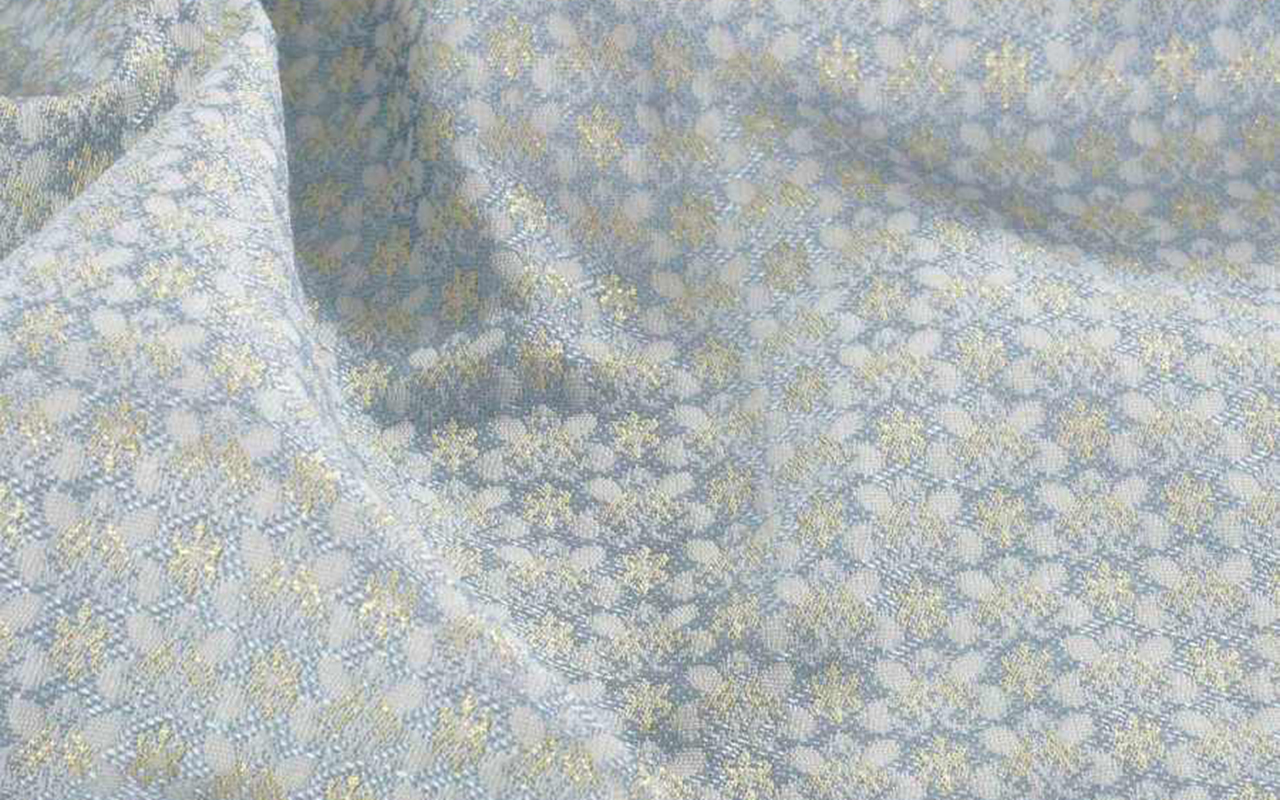
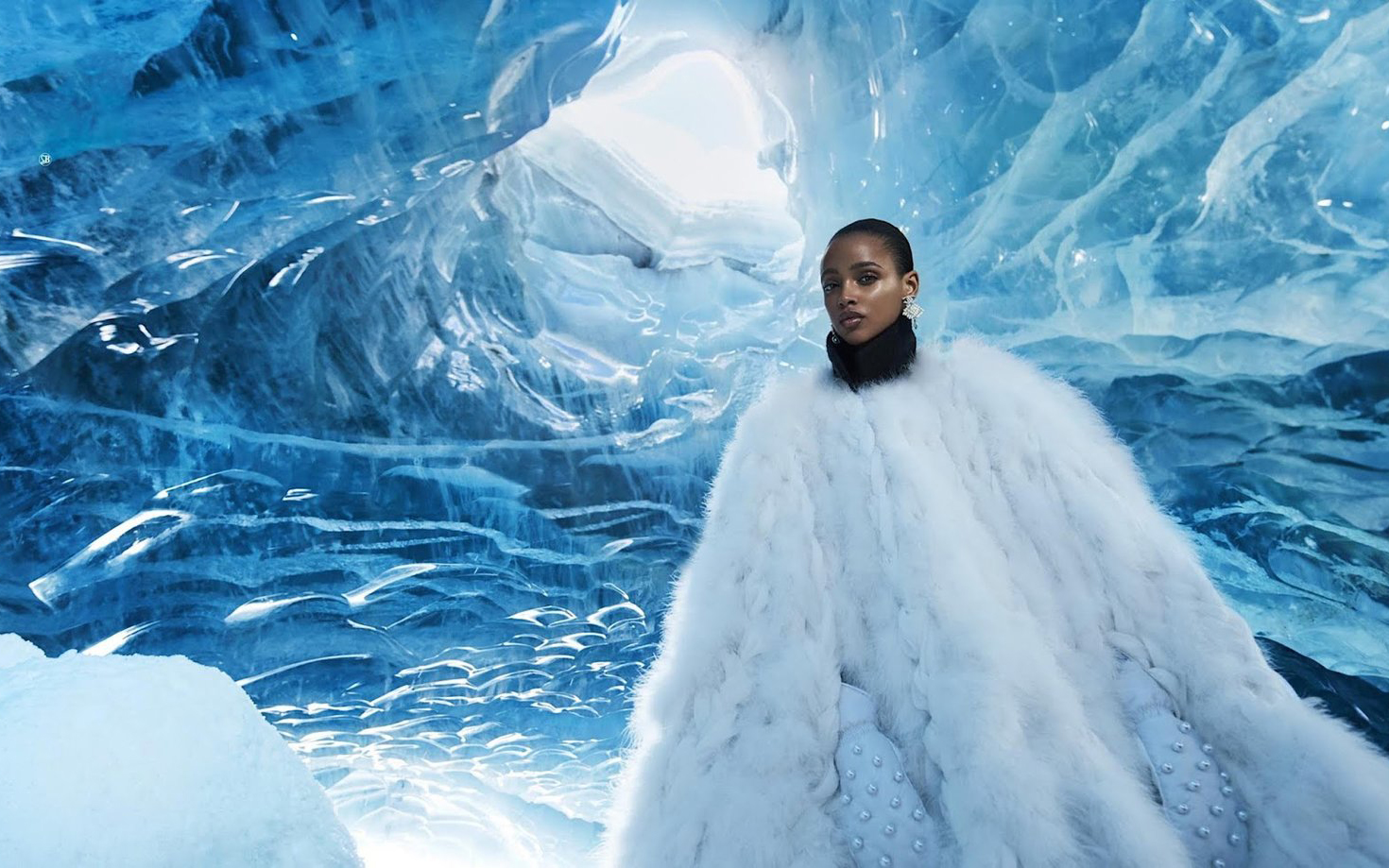
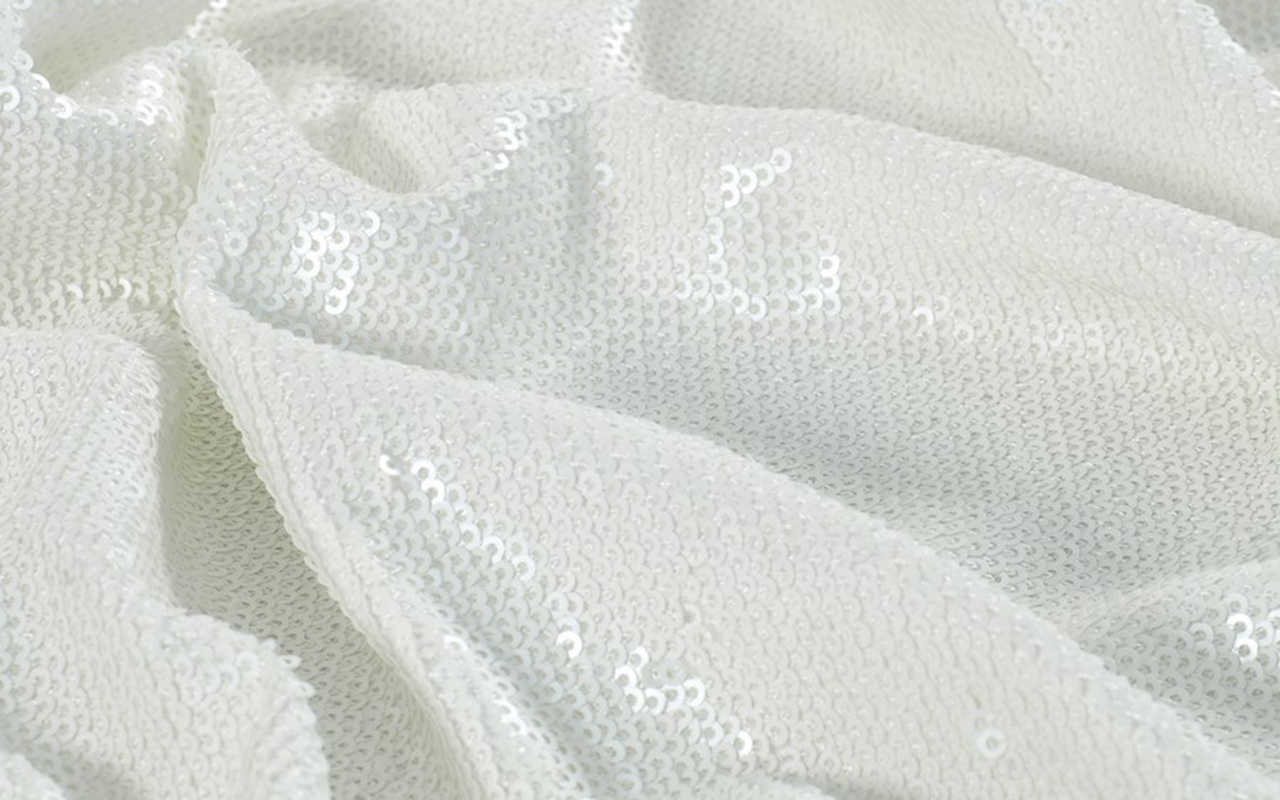
Miércoles 22 noviembre 2023
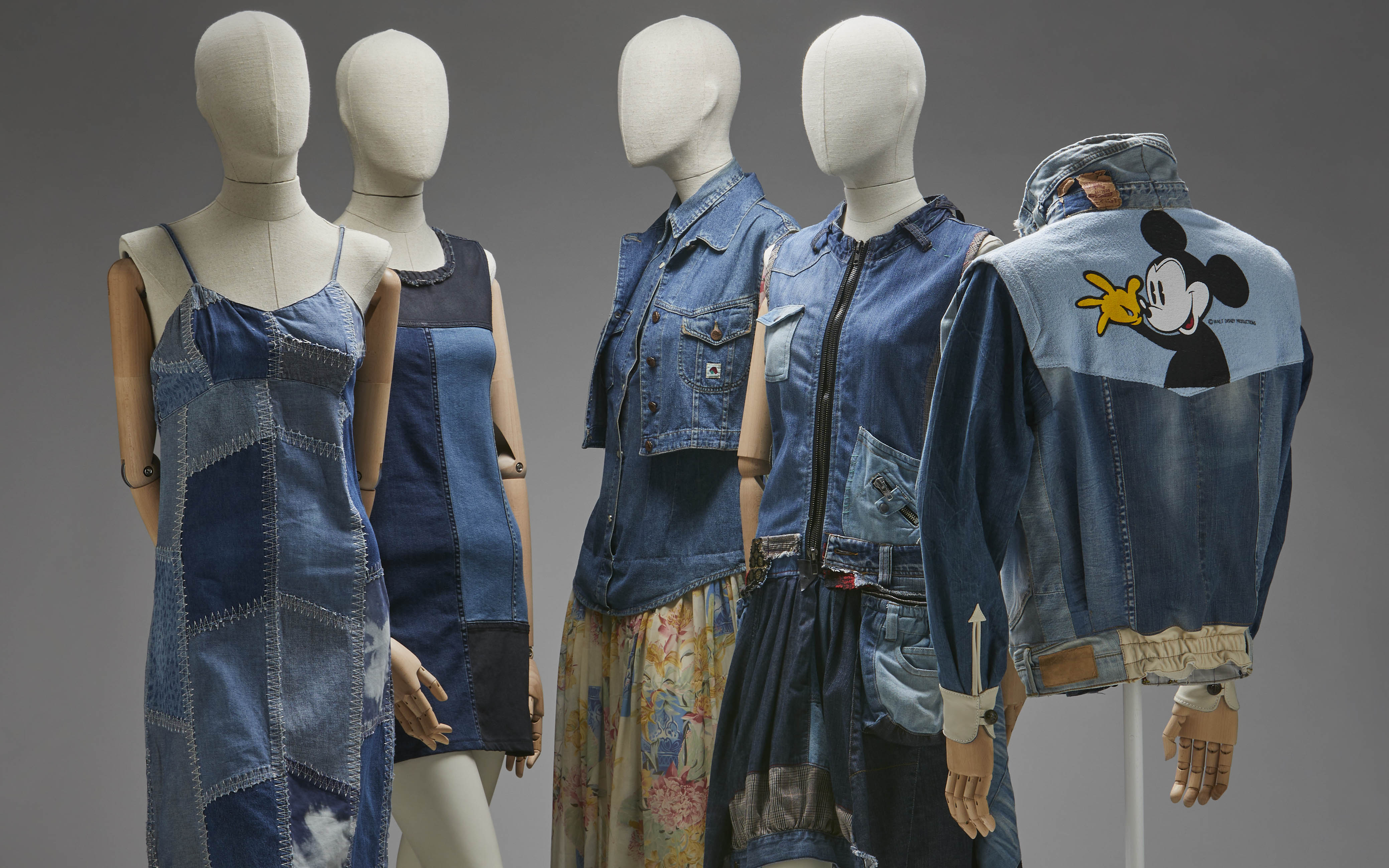 Pics: Museo del Traje CIPE.
Pics: Museo del Traje CIPE.
How many jeans do you have in your closet? Or, rather, how many garments made with denim? Surely, the mental figure would occupy double digits if we start counting the number of trousers, skirts, dresses, shirts and jackets that hang on the hangers and are made with the world-famous denim, without a doubt, the king of fabrics.
Jeans and denim clothing are some of the most universal elements in contemporary fashion. These garments transcend social class barriers around the world and, although they initially emerged as utilitarian garments for the working classes, over time they have become common items that unify all wardrobes.
From the pioneer Levi’s, founded in 1853, to today’s ready-to-wear brands and luxury houses. If we had to define the 20th century to the present day in one piece, it would surely be a pair of jeans: whether it be a model with large tears, patchwork elements and misaligned hems, or the stylish model that Kaia Gerber wore at Valentino for the show Haute Couture Fall-Winter 2023-2024. In the words of Pier Paolo Piccioli: “Strength is not in the outfits, but in the clothes.”
Aware of the universal power and conceived as a symbol of our contemporary culture, the Costume Museum wanted to pay tribute to the eternal jeans with the exhibition ‘Jeans, from the street to the Ritz‘.
Curated by Josep Casamartina i Parassols and Ismael Nuñez Muñoz of the Fundació Antoni de Montpalau and coordinated by María del Mar Belver, the exhibition pays tribute to the cowboy. How? Through a journey through the history of denim fabric, from its origins as a material in the 18th century, through the birth of the jean in the mid-19th century and its enormous expansion throughout the 20th century and the beginning of the 21st, to its infinite formal and textile variations, but also symbolic and social.
The proposal includes more than 200 pieces of clothing accompanied by graphic documentation and accessories from the Fundació Antoni de Montpalau, completed with loans from the private collections of the collector Josep M. Rovira, the historical archive of the Lois brand and the collector Paco Sifre, as well as the companies Jeanología and Evlox. Among them, classic brands dedicated to making jeans stand out, such as Levi Strauss, Lee, Lois or Pepe Jeans, but also brands such as Cavalli, Armani, Kenzo, Paco Rabanne, Gloria Vanderbilt, Calvin Klein, Thierry Mugler, Jean Paul Gaultier, Dolce & Gabbana, Moschino, Versace, Gori de Palma or Christian Lacroix.
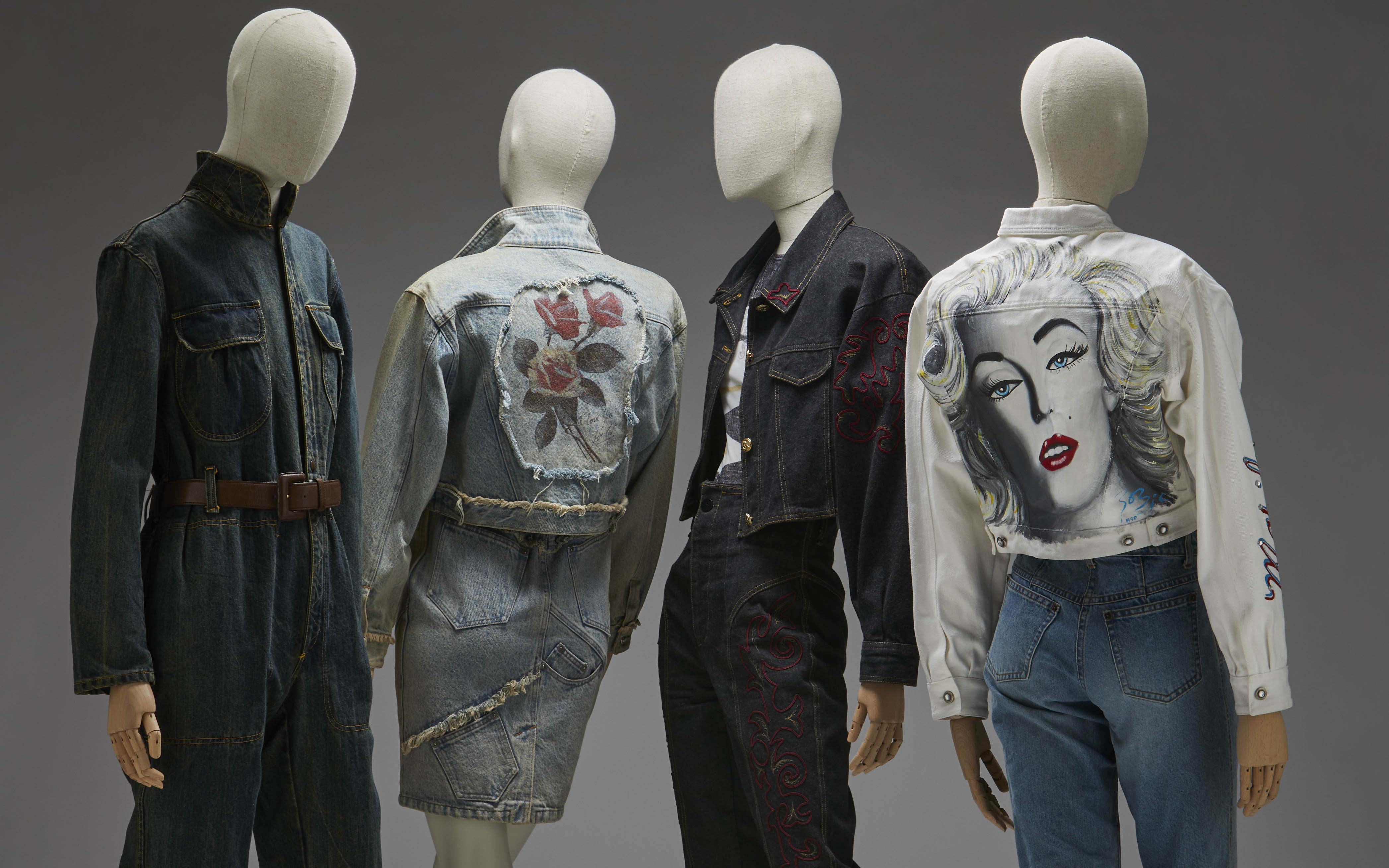
From Europe to the United States. The origins of denim
The origins of this fabric date back to the 17th and 18th centuries, until the mid-19th century when the garment that takes its name from the fabric itself was born. Denim is a cotton twill made with very strong and durable twisted threads. The beginnings of the industry are located between Nimes – this is where the name comes from – and Genoa, where most of the factories that produced the fabric were concentrated. Jeans as such were not “invented” until 1860, when Levi Strauss began using twill fabric to make work clothes. Without disconnecting from the United States, the exhibition follows the course of history and strips the cowboy of its exclusive association with the working class, explaining how it came to be a symbol of masculinity and, later, a garment of female empowerment through its outstanding diffusion in the world of cinema, music or urban movements.
The exhibition also presents a section on denim production in Europe, with an industrial network of brands dedicated to denim clothing that would soon achieve great international dissemination. In fact, Spain was one of the most prominent producers, with companies in Catalonia, Valencia, the Basque Country and Castilla la Mancha.
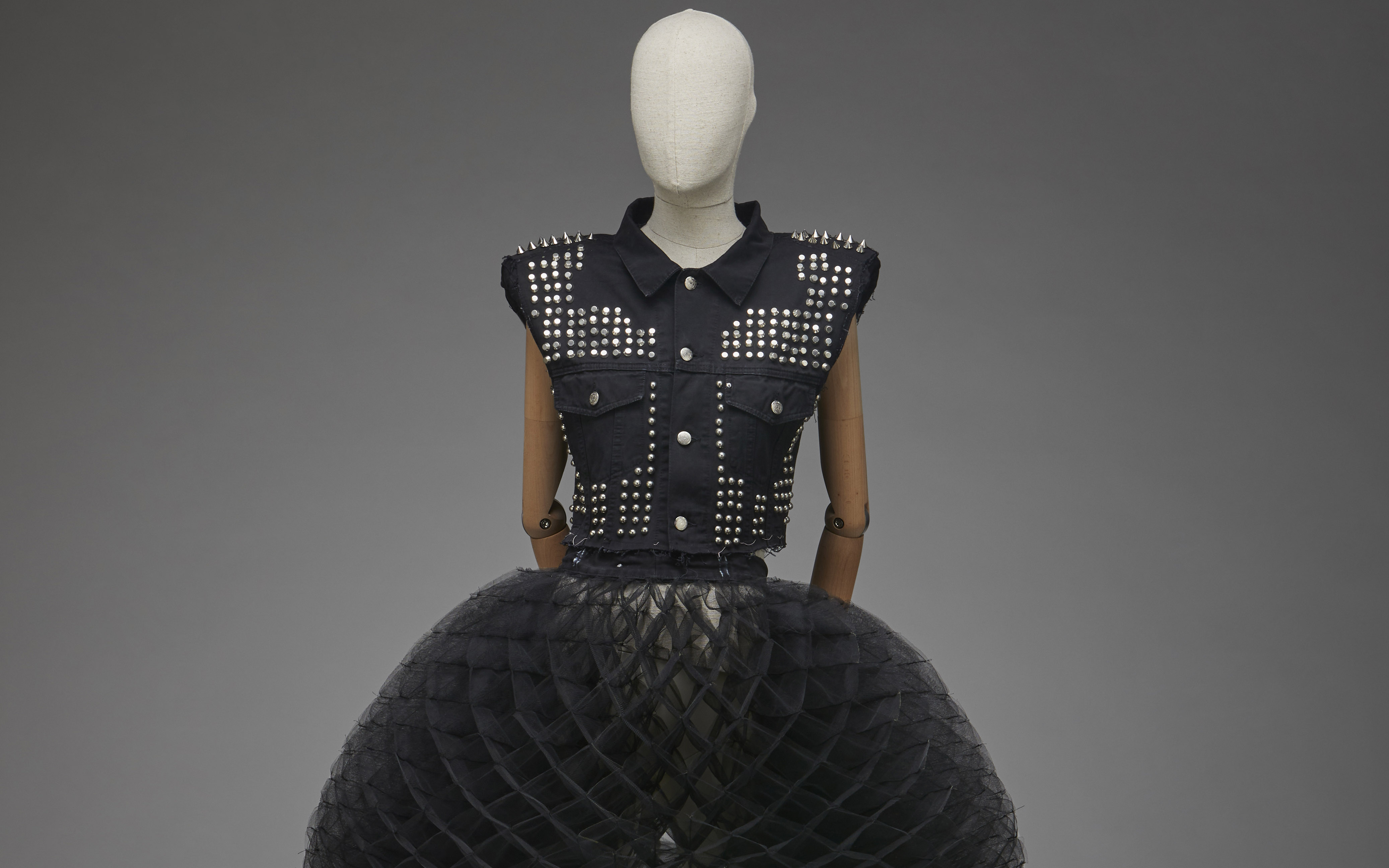
A constant metamorphosis
Starting in the 1970s, the fashion world adopted denim and integrated it without complexes. The industry moved forward in search of new horizons and gave rise to countless variations in the types of denim garments. It is curious that, although jeans were born to last, at the end of the 20th century a taste for worn and torn jeans arose. In the same way, it was used to recreate modern versions of historical pieces totally removed from utilitarian clothing. Pleats, draping, puffing, pleating, extravagant prints and all kinds of embroidery flooded jeans in the world of luxury. In fact, the exhibition also explains how major luxury brands adopted denim and introduced jeans into the world of glamour, generating a kaleidoscopic denim universe.
Precisely, the exhibition culminates with a “brunch at the Ritz”, where the aim is to emphasize how denim has become a prominent part of the social elite. With a nod to the famous quote by Yves Saint Laurent, who proclaimed “Down with the Ritz! Long live the street!”, the exhibition shows how jeans would end up taking over the Ritz in their own right thanks to their enormous versatility and their role as absolute kings of the street.
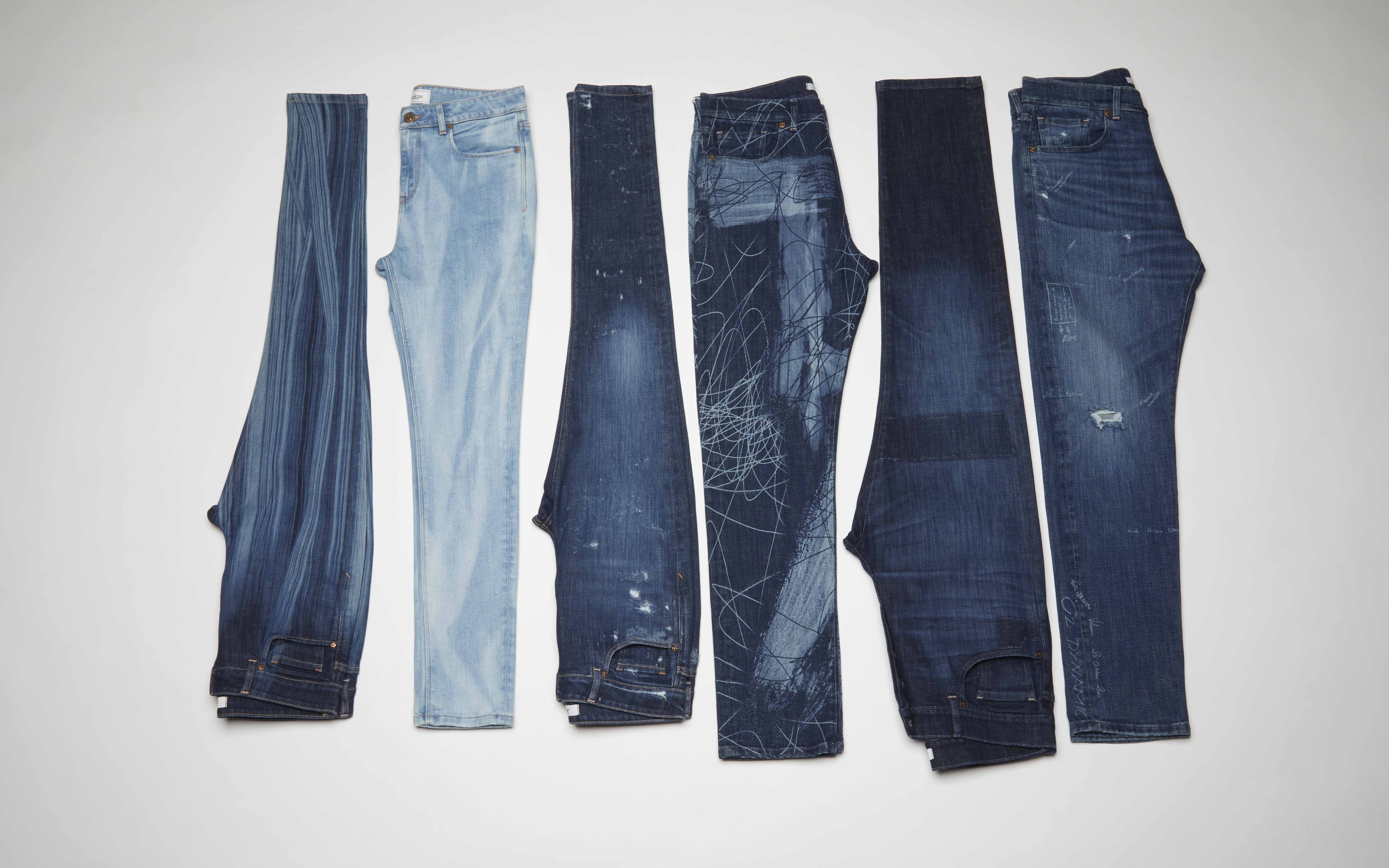
The sustainable vision
Jeans, from the street to the Ritz’ also highlights an uncomfortable issue. Beyond being the most popular and durable fabric in the world, denim also has a dark back: it is the fabric that demands the most water resources. To produce a single pair of jeans, 3,000 liters of water are needed. In one of the challenges posed for the new century, the exhibition also addresses, although cautiously, the ecological implications of the manufacturing process and the search for sustainable alternatives for its production.
‘Jeans, from the street to the Ritz’ will be open to the public until the 17th March, 2024.

Miércoles 11 octubre 2023
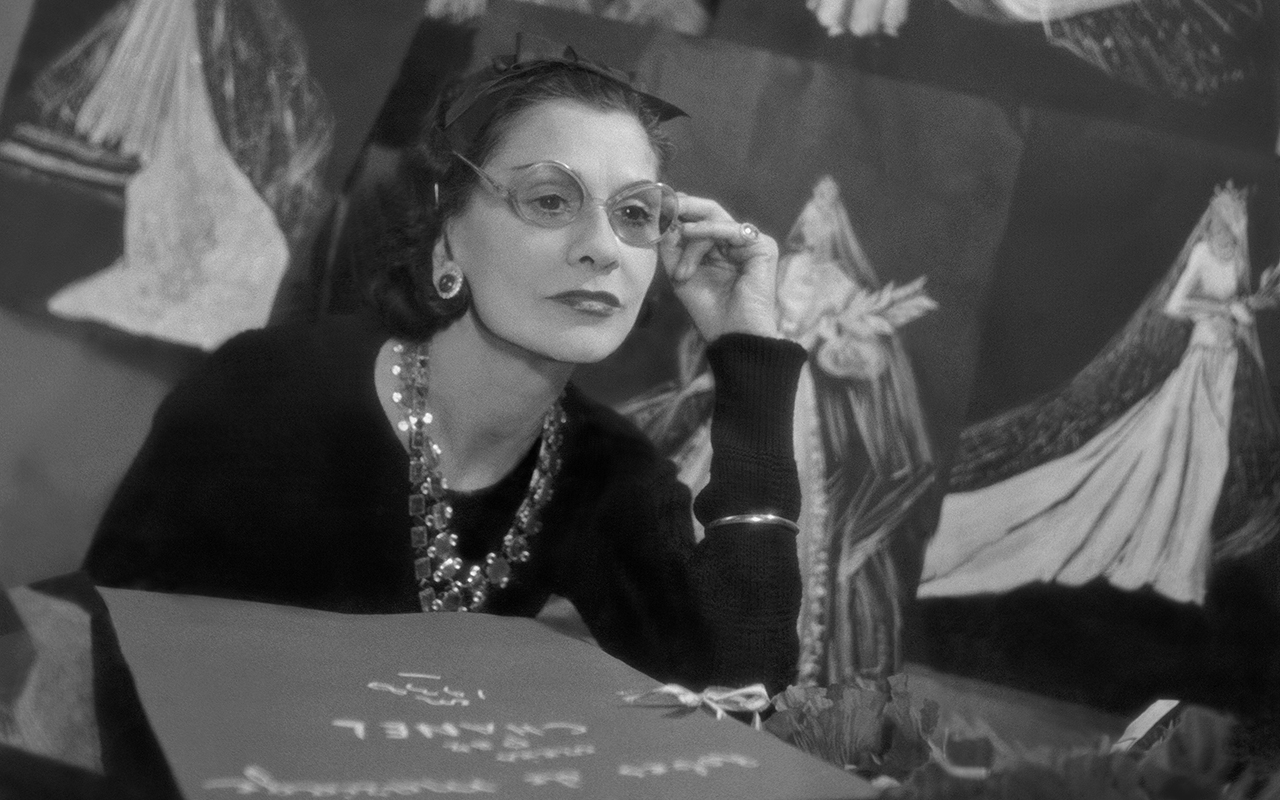 Gabrielle Chanel, 31 rue Cambon, 1937, Paris. Photo: Roger Schall/Condé Nast/Shutterstock
Gabrielle Chanel, 31 rue Cambon, 1937, Paris. Photo: Roger Schall/Condé Nast/Shutterstock
The UK has long awaited such an ambitious exhibition focusing on the style and work of one of the great icons of contemporary fashion. After the success of the first weeks since its premiere and a triumphant opening, the V&A resumes its usual activity so that culture lovers can contemplate with greater peace of mind the life path and savoir-faire of Gabrielle ‘Coco’ Chanel.
Gabrielle Chanel. Fashion Manifesto is the first exhibition dedicated to the work of the celebrated French couturier and traces the evolution of her iconic design style and the creation of the House of CHANEL, from the opening of her first hat store in Paris in 1910 to the presentation from his last collection in 1971.
The exhibition stands out for its grandeur in every aspect, with rarely seen pieces that have been recovered from the Palais Galliera and the heritage collections that form part of the Chanel Heritage. It presents in the same space almost 200 looks that are exhibited together for the first time, as well as accessories, perfumes and jewelry, which explore Gabrielle Chanel’s talent in fashion design. She was a visionary who paved the way to a new elegance and continues to influence the way women dress today. Among the treasures exhibited, one of the oldest Chanel garments preserved, dating from 1916, stands out; original costumes designed for the production of Ballets Russes from Le Train Bleu in 1924; outfits created for Hollywood stars Lauren Bacall and Marlene Dietrich; an early example of Chanel’s revolutionary evening pants and ensembles from Chanel’s final collection in 1971.
An unprecedented formula: comfortable elegance
Chanel designed above all for herself. By creating clothing suitable for an independent and active lifestyle, she anticipated the needs and desires of women. “Gabrielle Chanel dedicated her life to creating, perfecting and promoting a new type of elegance based on freedom of movement, a natural and casual pose, a subtle elegance that rejects all extravagance, a timeless style for a new type of woman,” said Miren Arzalluz , director of the Palais Galliera at the opening of the exhibition in London. This is precisely the Coco Chanel Manifesto, a legacy that remains alive today: “Her success was based not only on the functionality, comfort and chic elegance of her designs, but also on her ability to understand and interpret the needs and desires of the women of her time,” added Arzalluz.
Through ten thematic sections, the exhibition explores Chanel’s innovative approach to fabric, silhouette and construction, and examines how she established a new framework for fashion in the 20th century. Showcasing an impressive array of some of Chanel’s most notable designs during her sixty years in fashion, the exhibition examines her professional career, the emergence and development of her style and her contribution to fashion history. The exhibition also places special emphasis on Chanel’s British inspirations, such as her adoption of tweed, collaborations with British textile companies and a textile factory in Huddersfield.
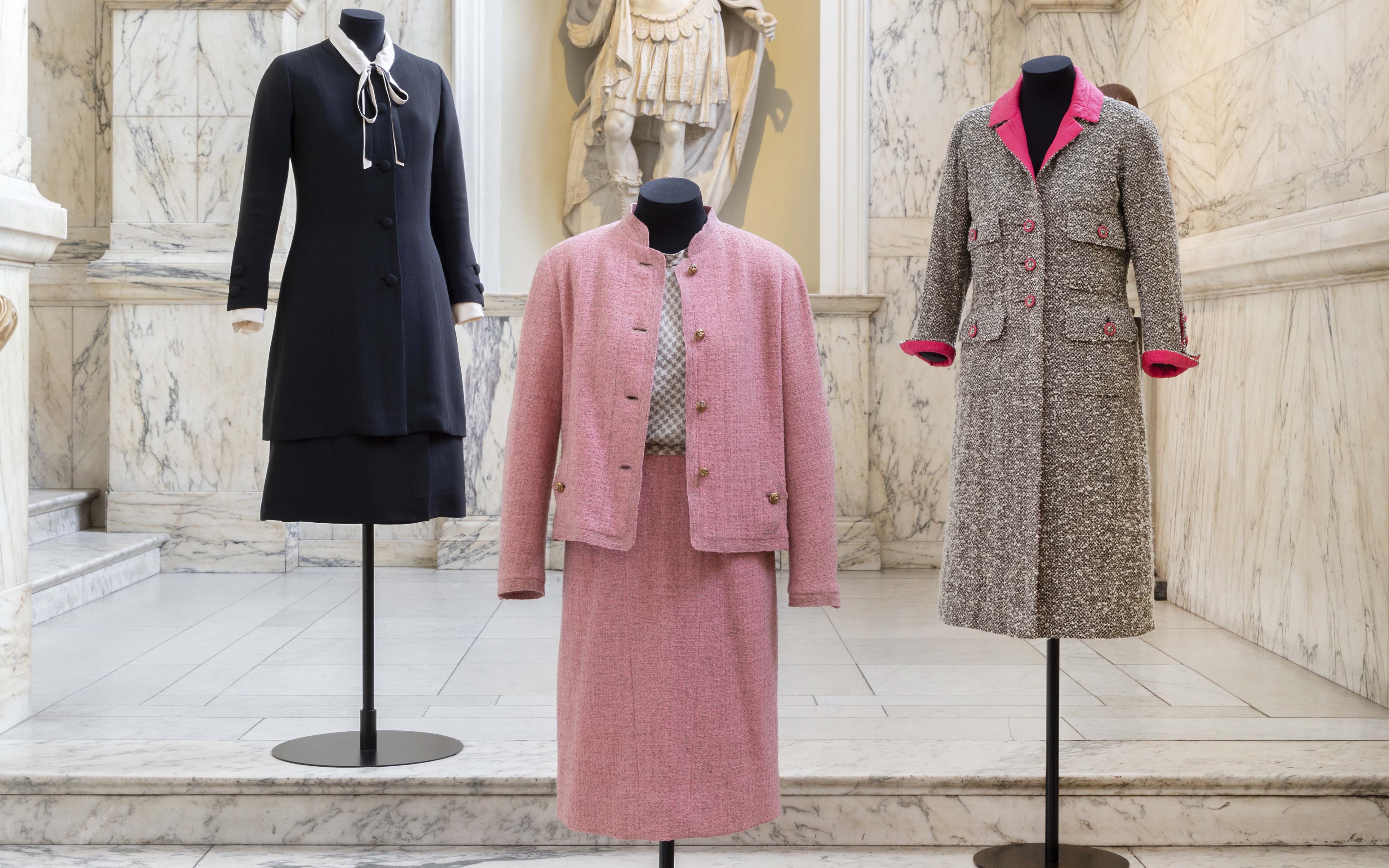 Gabrielle Chanel. Fashion Manifesto at the Victoria and Albert Museum
Gabrielle Chanel. Fashion Manifesto at the Victoria and Albert Museum
We review some key sections present in the exhibition:
Towards a New Elegance offers an introduction to the beginning of Gabrielle Chanel’s career as a couturier, opening her first boutique on the rue Cambon in Paris in 1910, and later, in the coastal resorts of Deauville and Biarritz. This introductory section describes how the success of this business allowed it to expand into tailoring and showcases one of the oldest surviving Chanel garments, characterized by minimalism and precision. A simplified way of dressing that contrasted with the excessively decorative fashions of the time and that would lay the foundations for its design principles.
The Emergence of a Style focuses on how Chanel developed a distinctive and immediately recognizable style in the 1920s and 1930s. With clean lines, fluid materials and a simple colour palette, her understated designs were radical in their practicality and displayed an elegance refined. This block also examines the role of textiles and manufacturing, the use of embroidery in their designs and highlights the famous black Chanel dress.
The Invisible Accessory presents the creation and impact of the debut of Gabrielle Chanel’s No. 5 perfume, which became the best-selling fragrance in the world. Designed as an extension of her clothing and reflecting her vision of modernity, Chanel made the N°5 the signature of her fashion house. This section also explores the launch of the Chanel makeup line in 1924 and skin care products in 1927.
Luxury and Line focuses on how Chanel eveningwear demonstrated a refined blend of inventiveness and classicism that subtly accentuated the female form. The designer harmonized proportions and materials with the aim of creating garments that expressed elegance, freedom and simplicity. The resulting designs conveyed the tension between the garment and the body, described in French as the ‘ allure ‘. This block will also examine ‘ Bijoux de Diamants ‘, his first and only fine jewelry collection from 1932 commissioned by International Diamond Corporation of London.
Closing the House describes the impact of the outbreak of war in 1939 on her personal and professional life. The exhibition continues with Chanel’s Official Return to Fashion on 5th February, 1954, with the reopening of her haute couture house at the age of seventy-one. Chanel’s comeback collection featured the distinctive features she had introduced so successfully during the 1920s and 1930s, representing her updated vision of the modern woman’s wardrobe.
The Suit focuses on Gabrielle Chanel’s defining garment of post-war fashion, with over fifty outfits in a variety of colours displayed on two levels. A statement of her vision of modern femininity, the Chanel suit combined comfort and elegance with simplicity and style. Described by Vogue in 1964 as “the most beautiful uniform in the world”, the Chanel suit, which has since become a timeless classic, remains a fundamental reference in fashion today.
Chanel Codes shows how accessories were fundamental to Chanel’s conception of a harmonious silhouette. The accessories reflected her pragmatic vision of fashion and provided recognizable codes that underlined the unity of her style. Since the 1950s, the Chanel 2.55 bag and two-tone slingback shoes have become two of the most enduring accessories in the fashion world.
Into the Evening presents festive fashion as an important part of Chanel’s haute couture collections in the last stage of her career. From the late 1950s she adapted her suits to include a range that could be worn at night. These cocktail dresses followed the same shape as her day suits, made in a variety of richly decorative fabrics such as gold and silver lamés , textured fabrics, and intricately printed silks. This section takes inspiration from the gold colour palette and black Coromandel lacquer lampshades of Chanel’s own apartment.
Costume Jewellery explores the essential part of Gabrielle Chanel’s distinctive style. Rejecting the conventions of fine jewelry, Chanel gave costume jewelry a new status. From the early 1920s, Chanel boutiques offered a dazzling range of costume jewelry to match its elegant fashion pieces. The designer’s costume jewelry took inspiration from various places and historical periods.
A Timeless Allure represents the end of the exhibition and celebrates the evening dress as an exercise in Chanel style, with looks displayed in a recreation of the iconic mirrored staircase based on the designer’s atelier. Chanel proposed a relaxed version of the formal dress that was discreet and refined, revisiting the foundations that had guided her aesthetic and marked her career. This block shows that, until her last Spring -Summer 1971 collection , Gabrielle Chanel constantly reinterpreted, updated and perfected her rules and principles, continually refining her legendary style.
The Gabrielle Chanel exhibition. Fashion Manifesto will be open to the public until the 25th February.
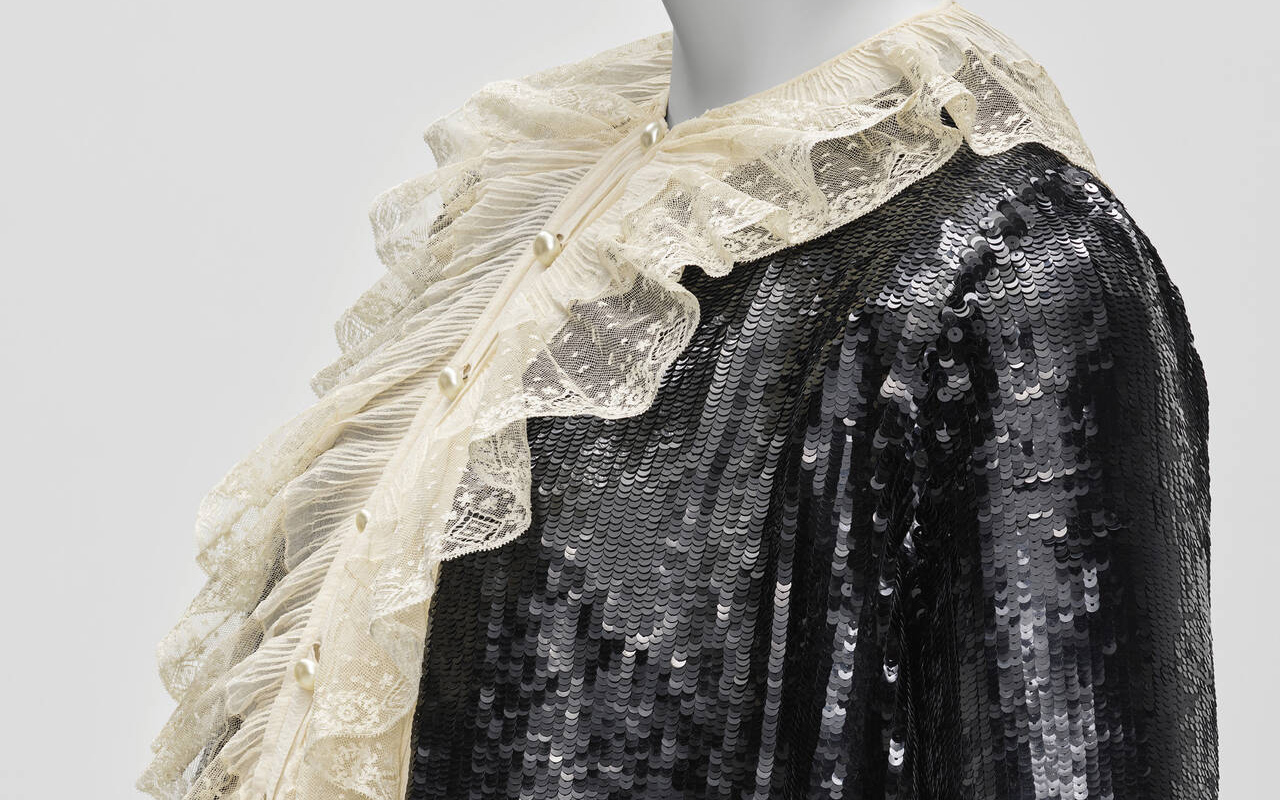
Gabrielle Chanel, Trouser suit 1937-38 © CHANEL / Photo: Nicholas Alan Cope / Courtesy of Victoria and Albert Museum, London / Given by Mrs Diana Vreelan

















































